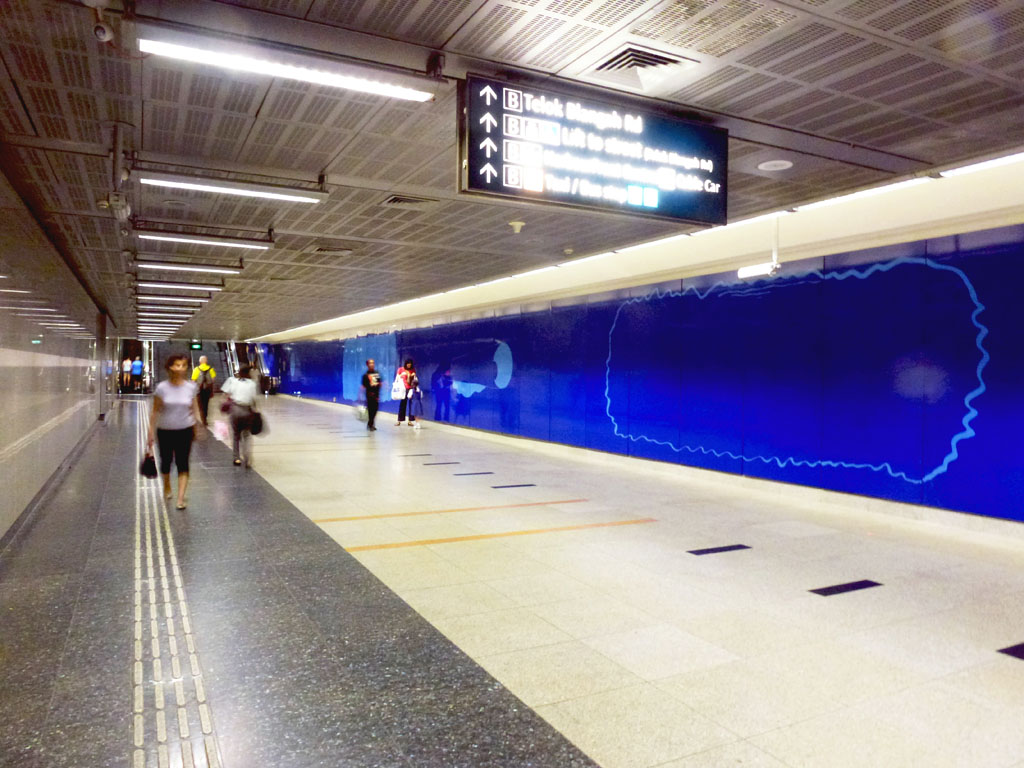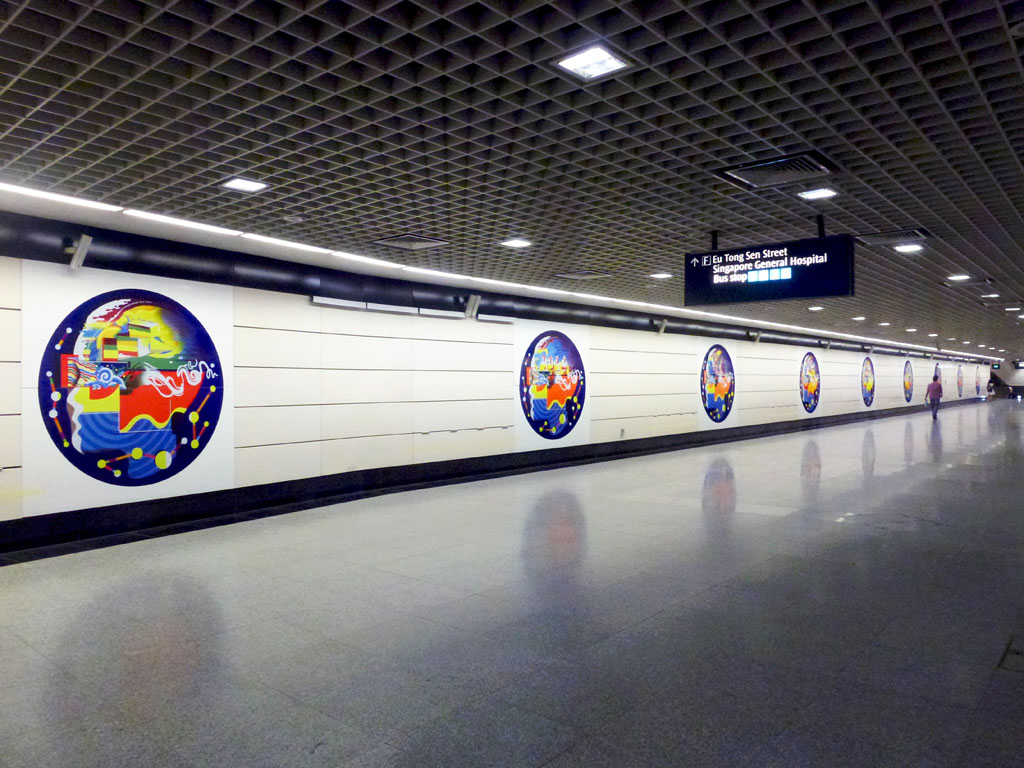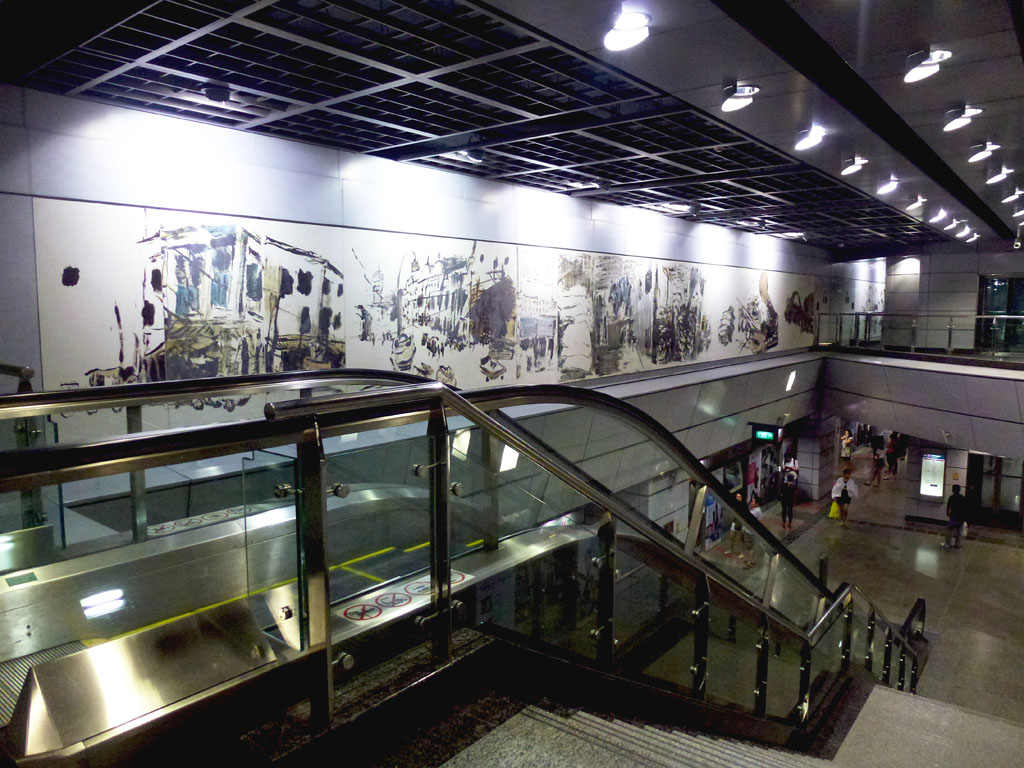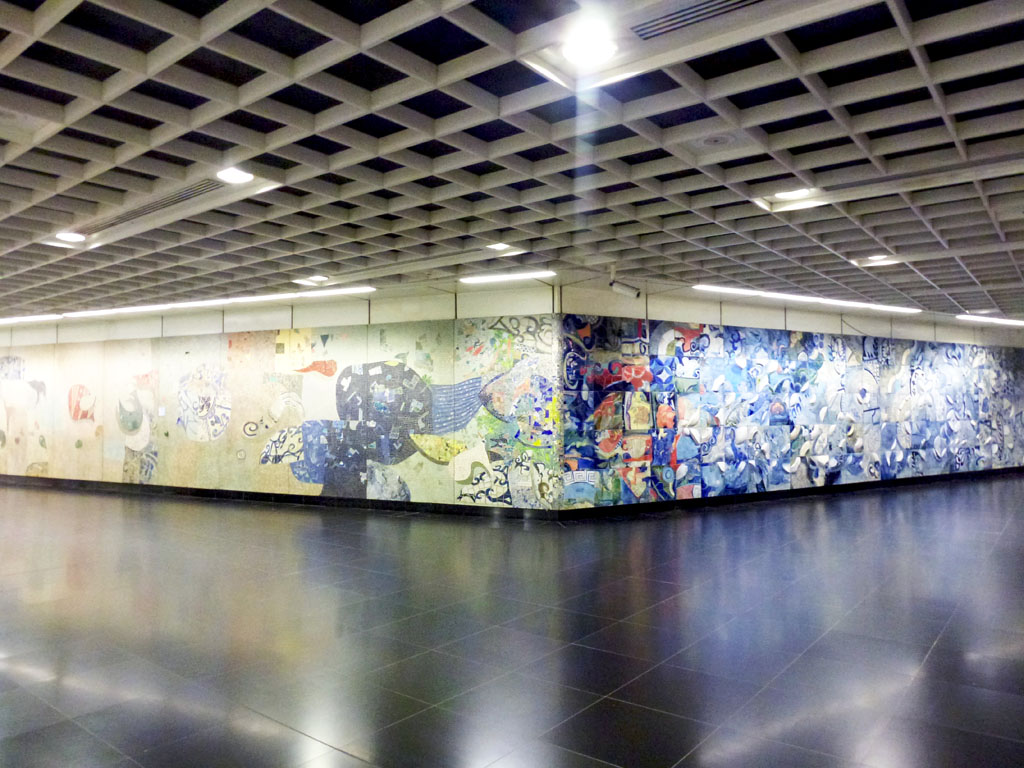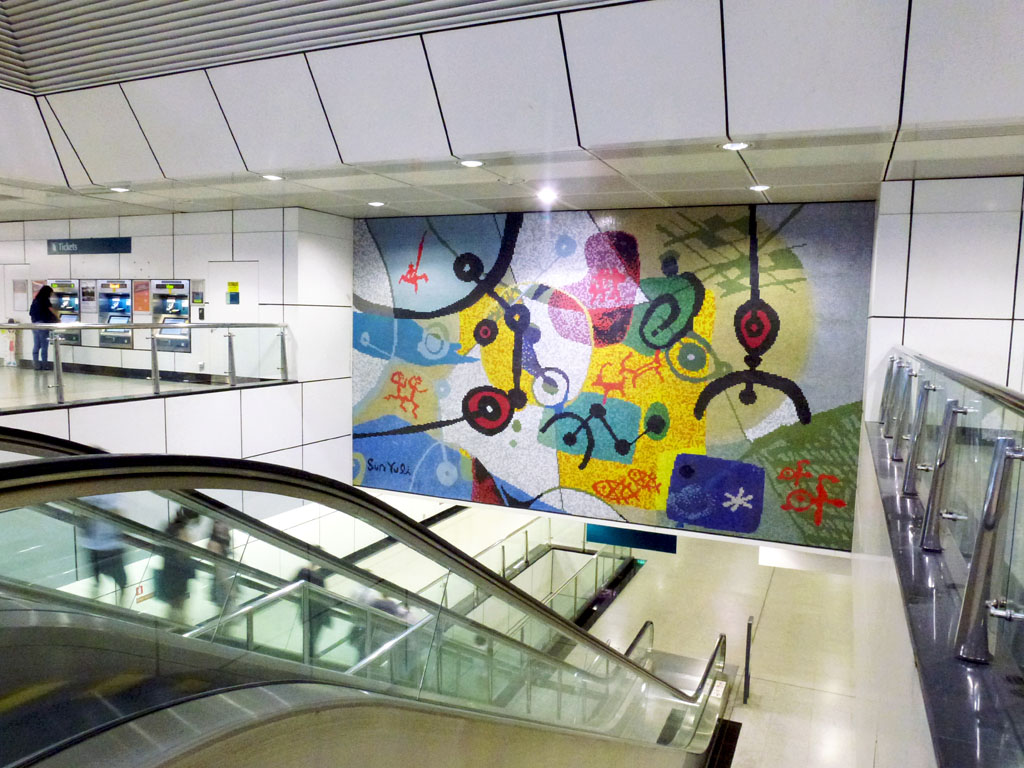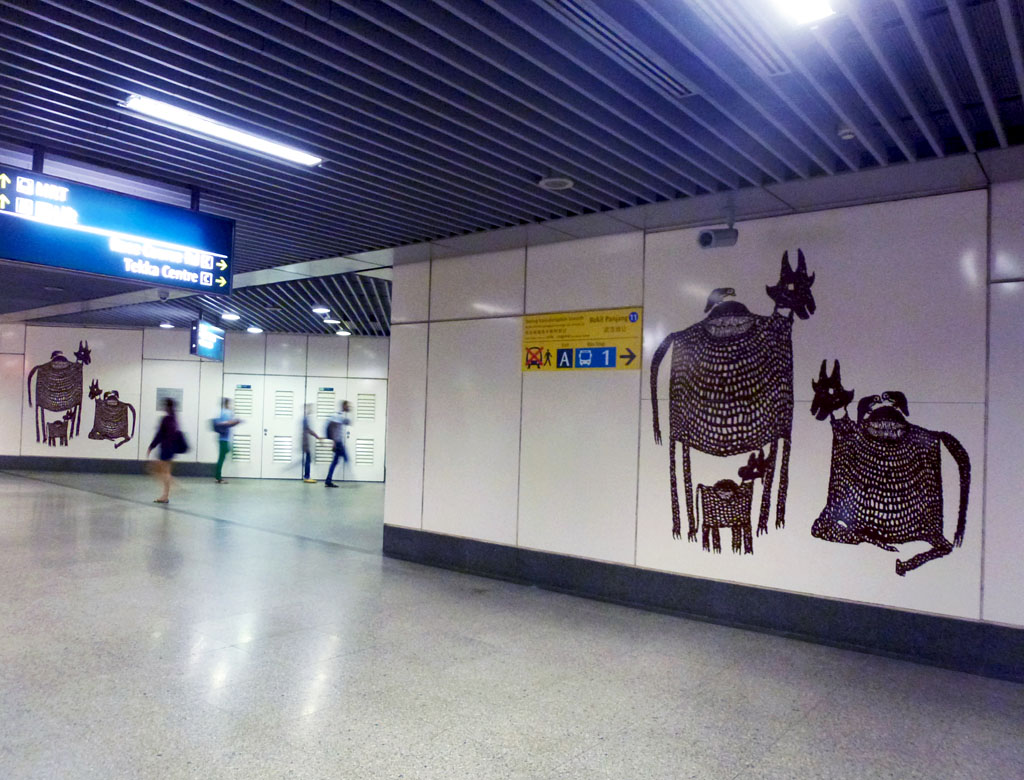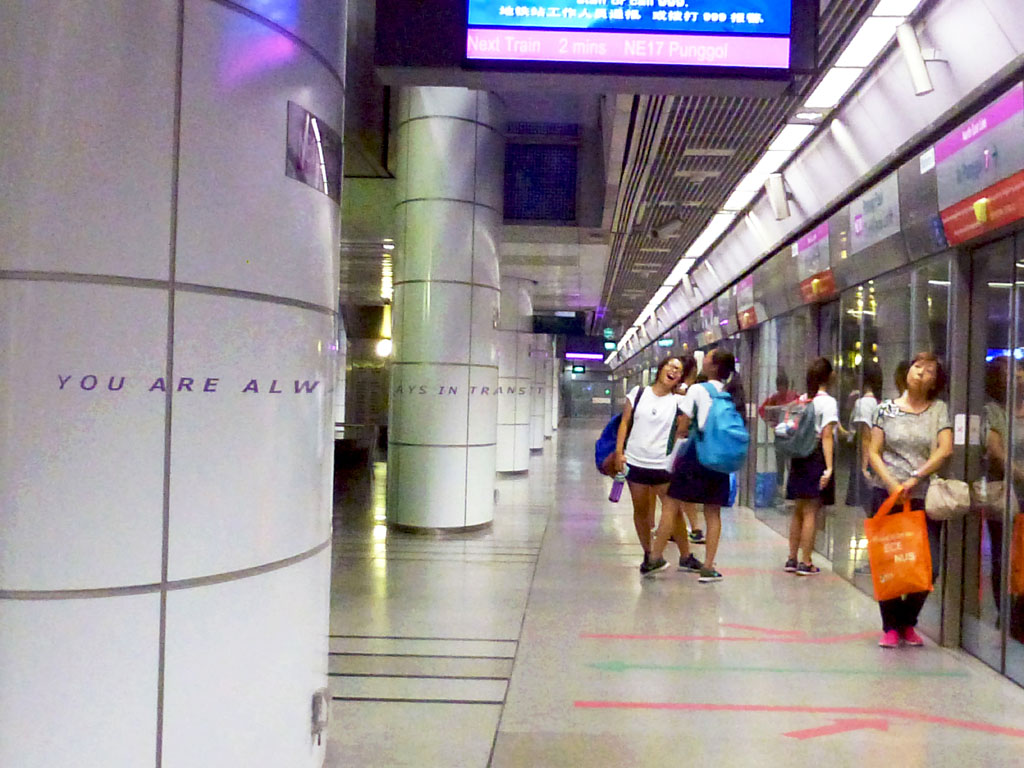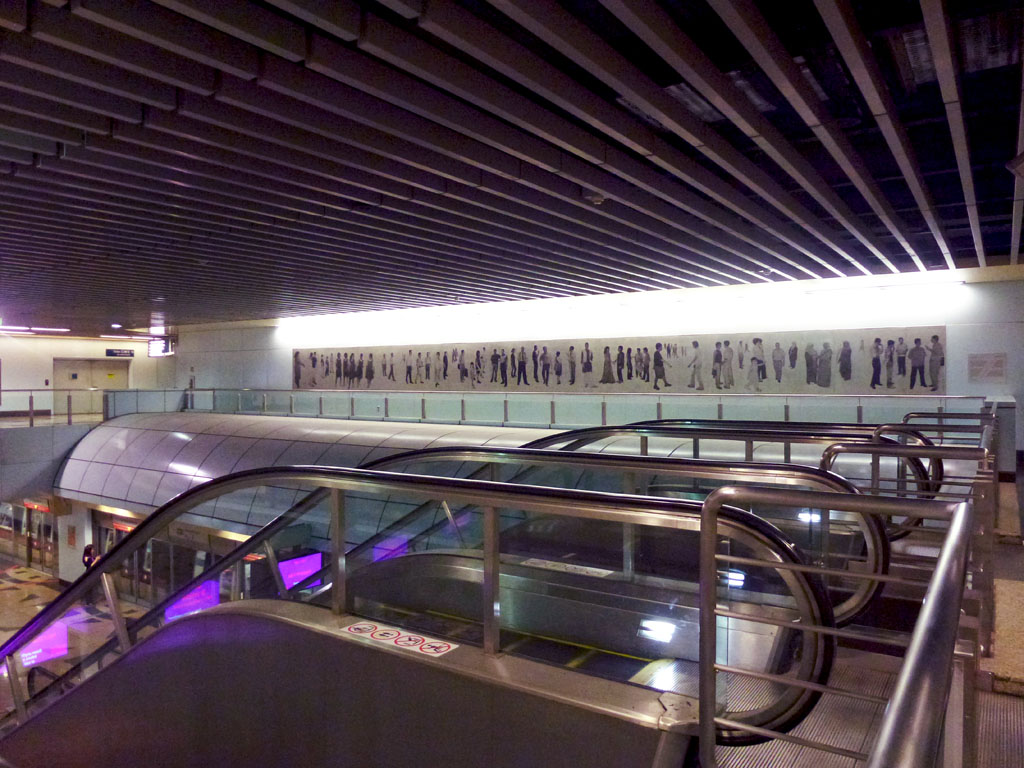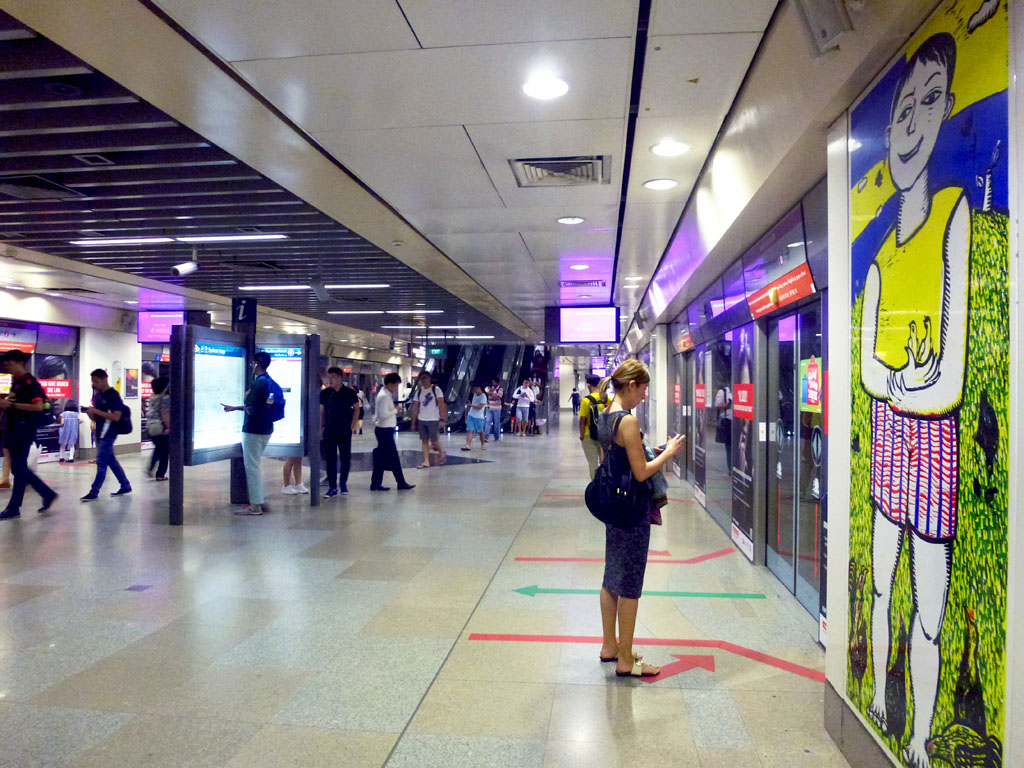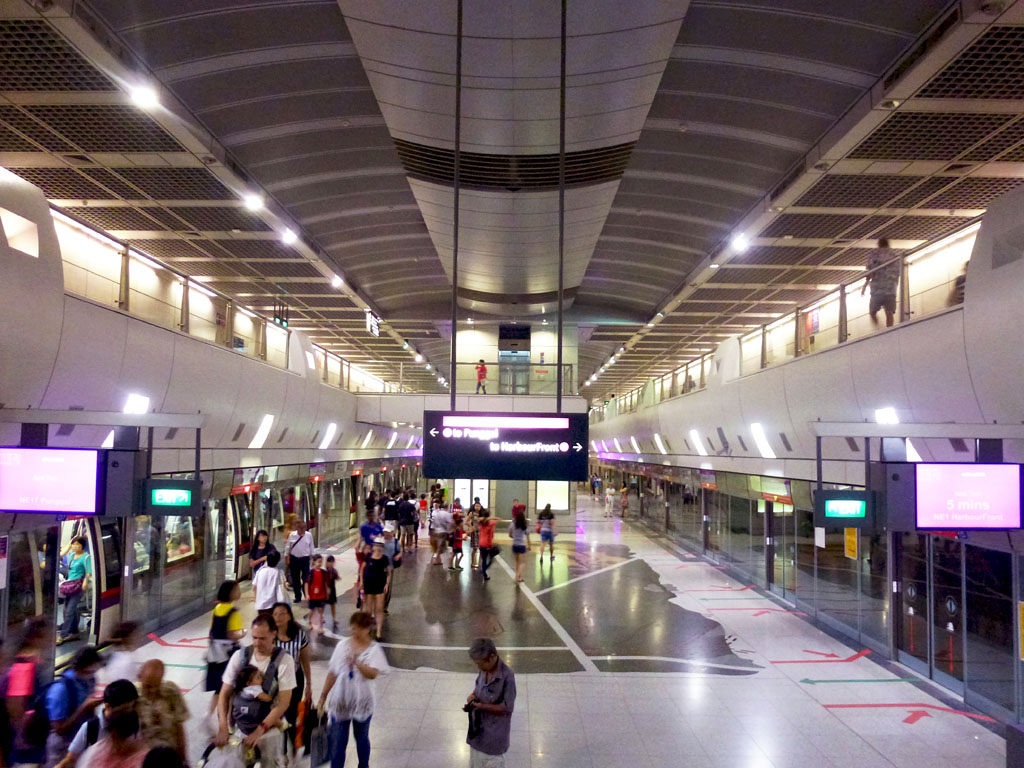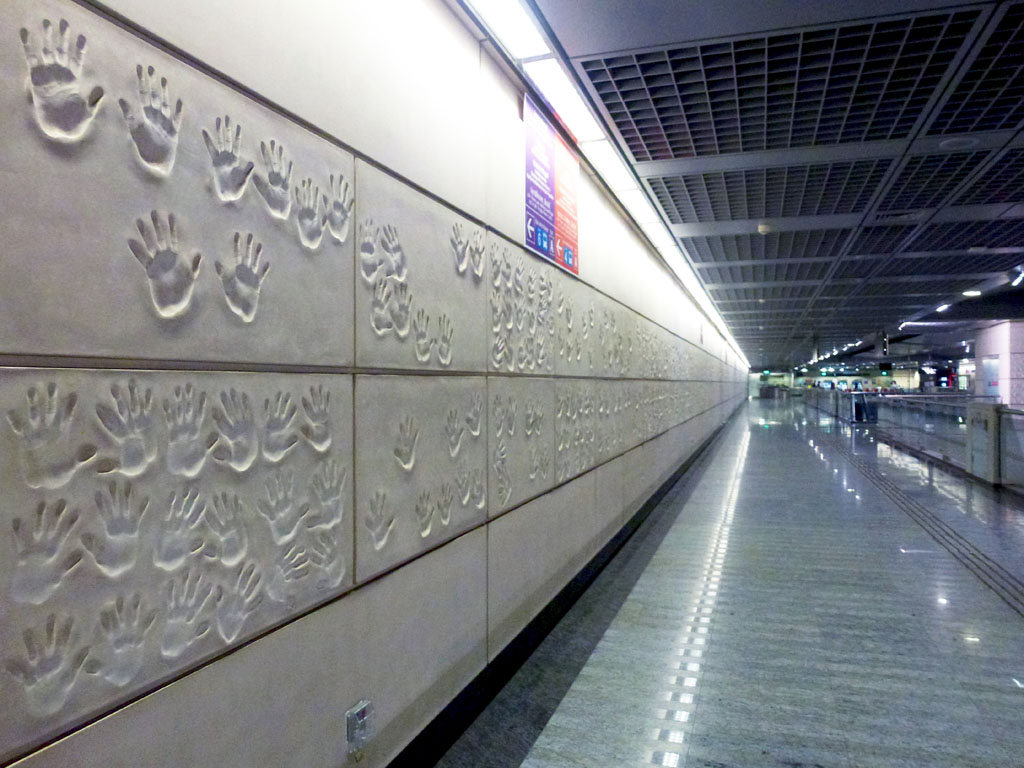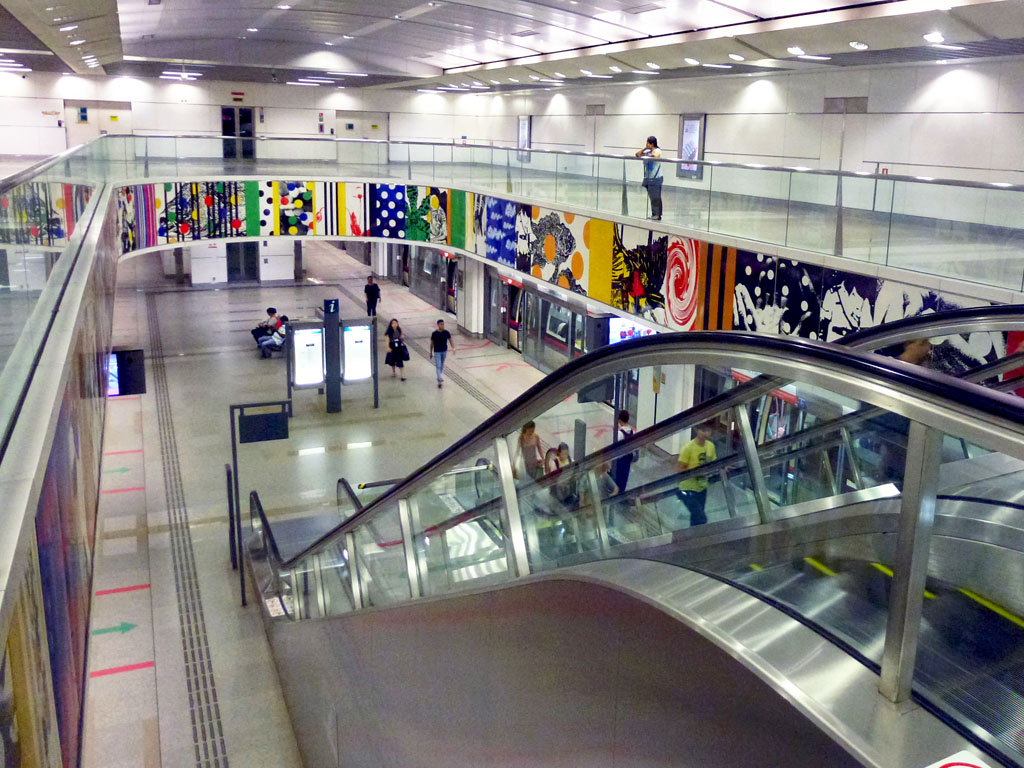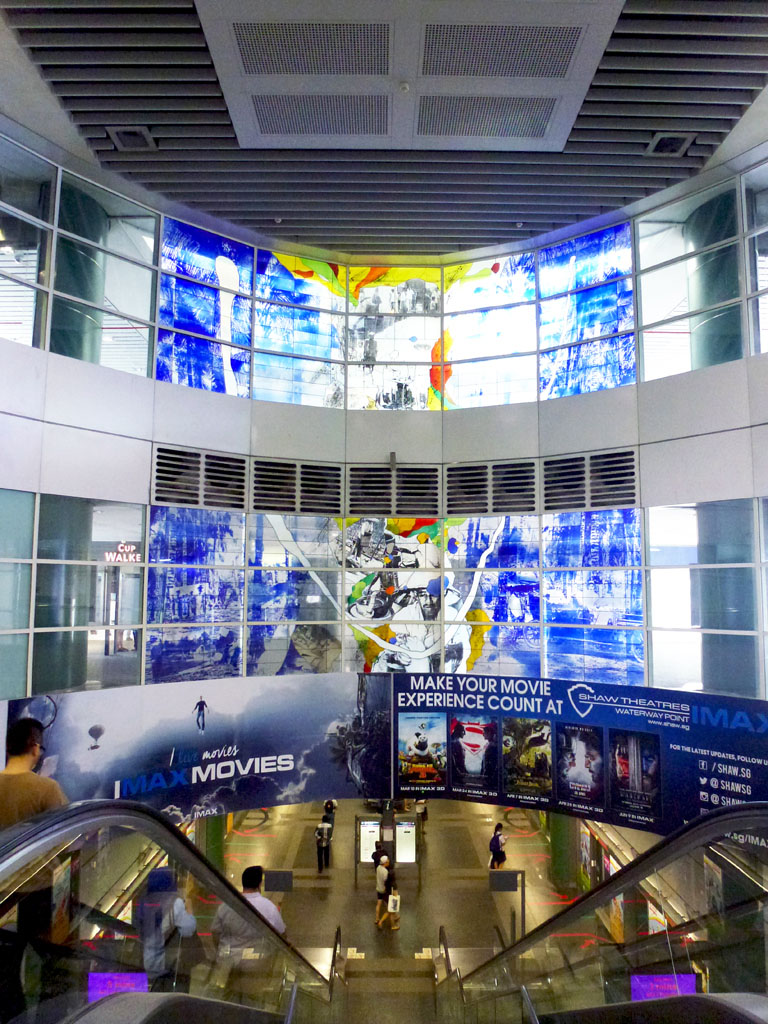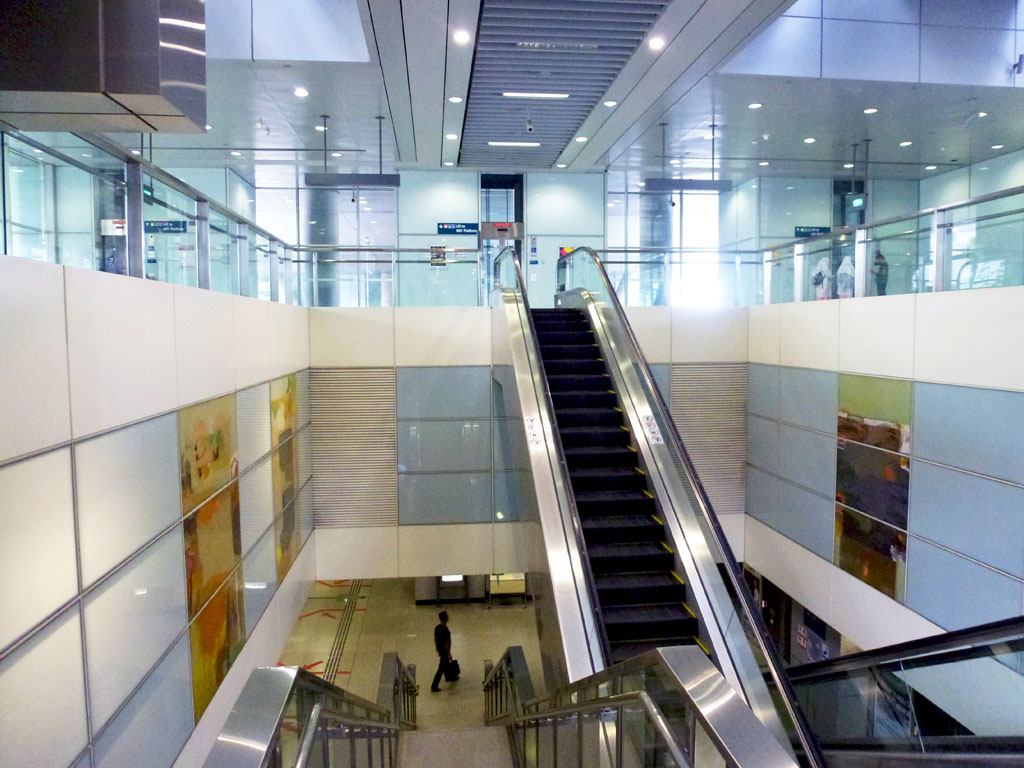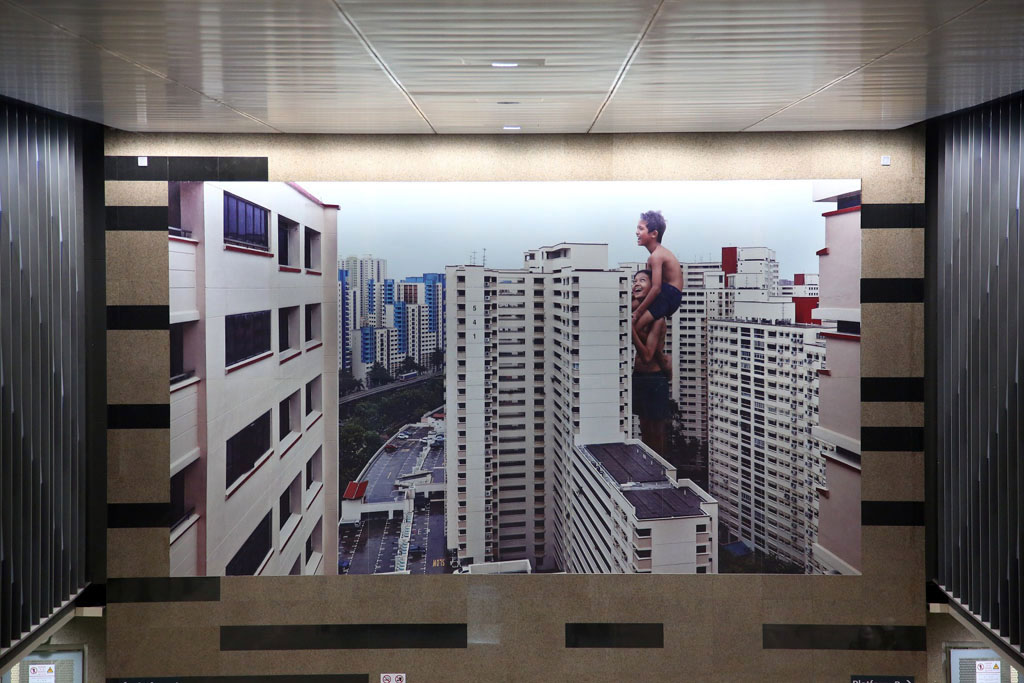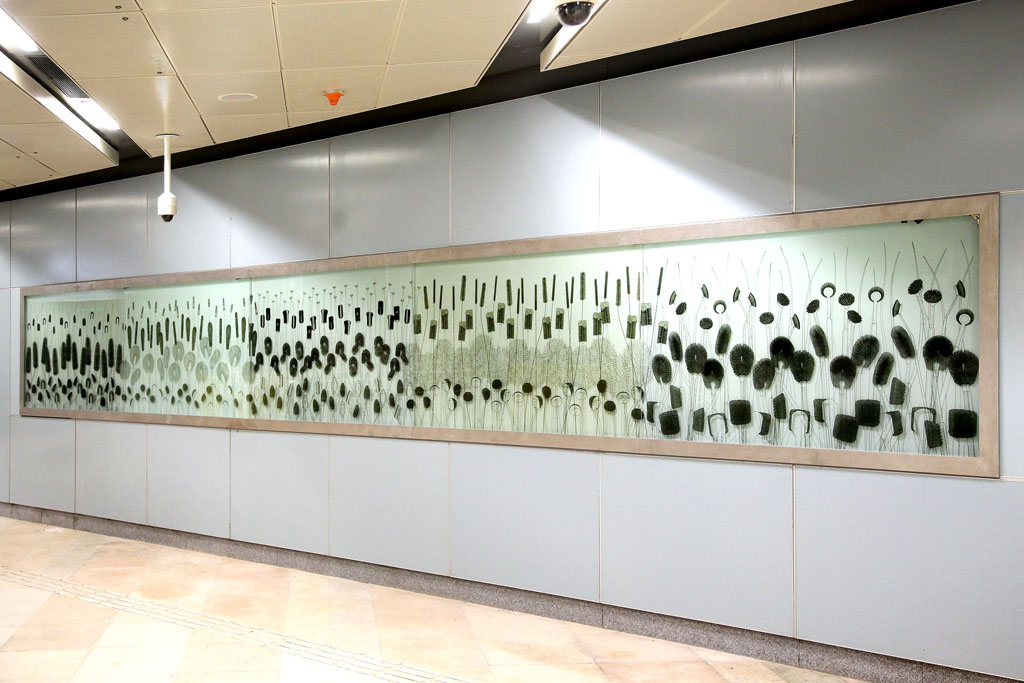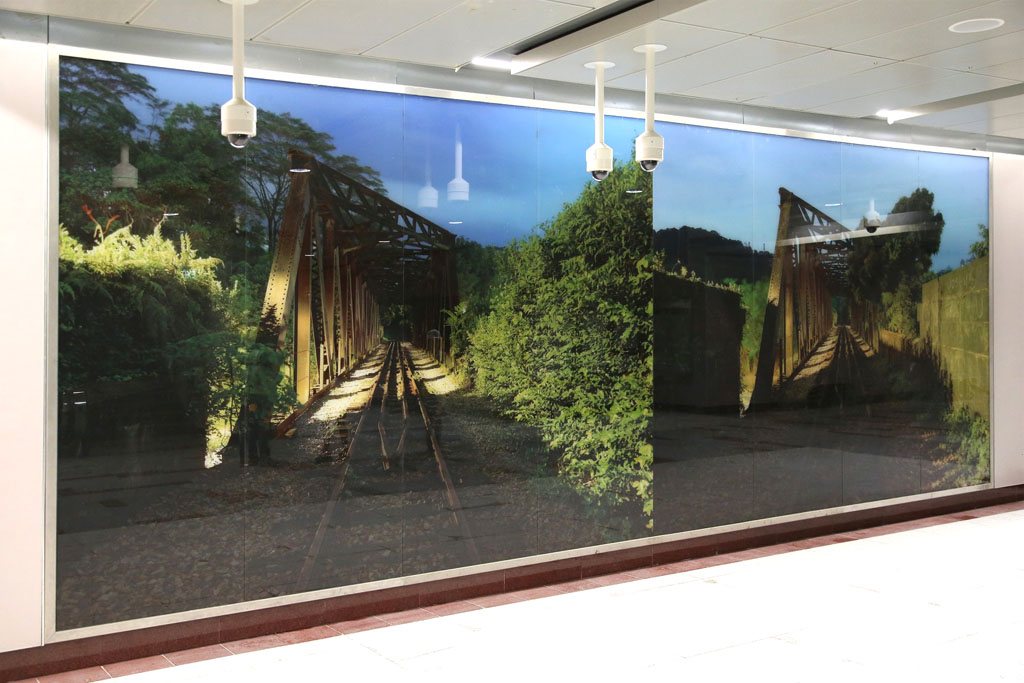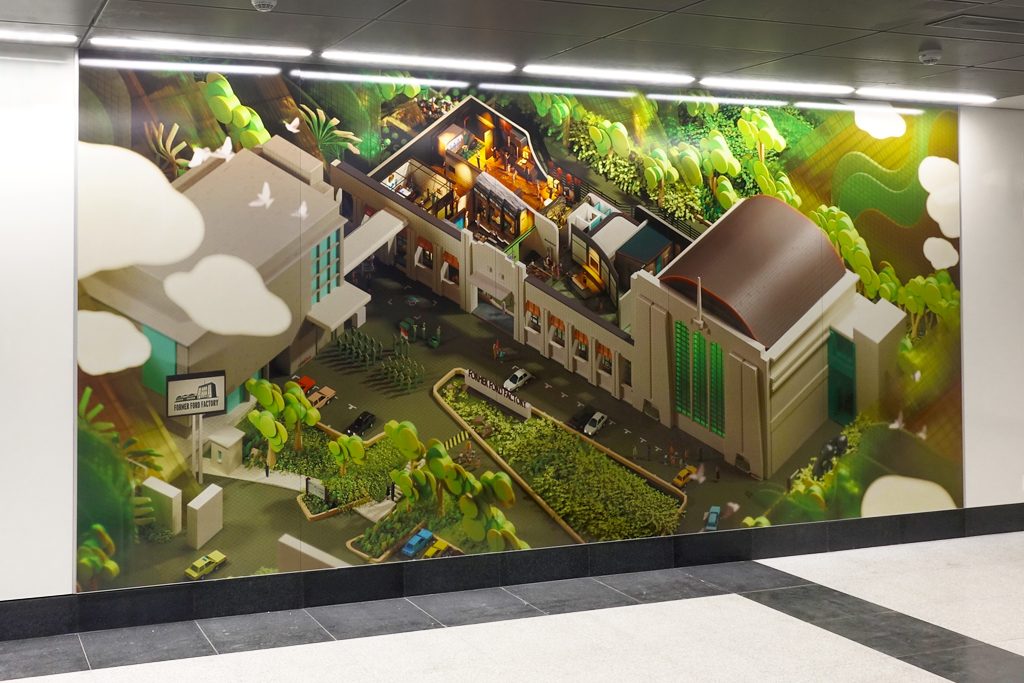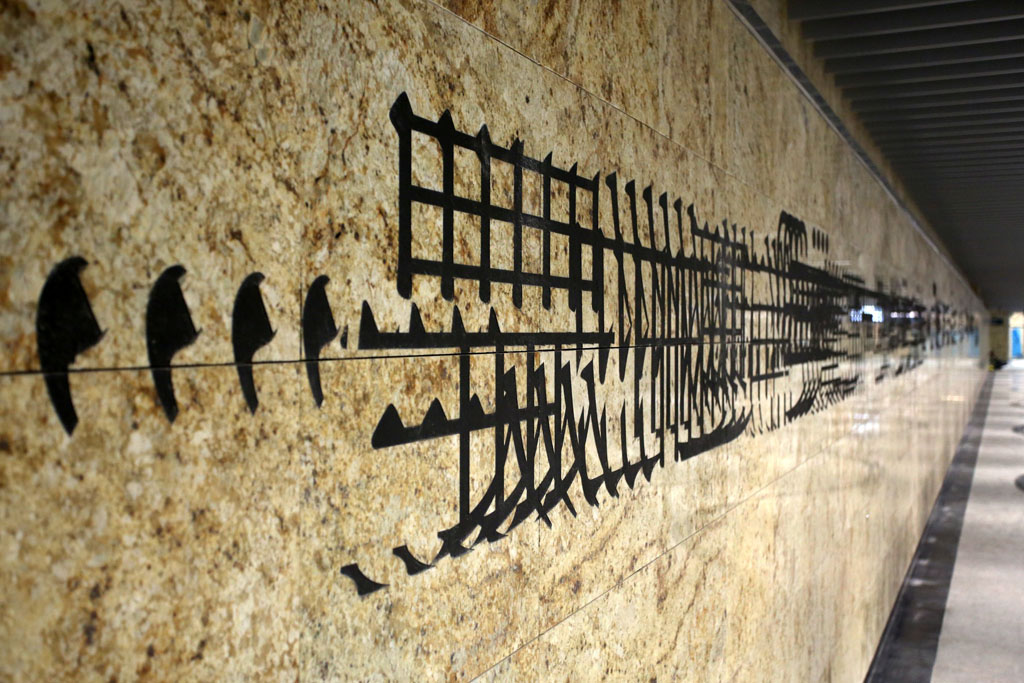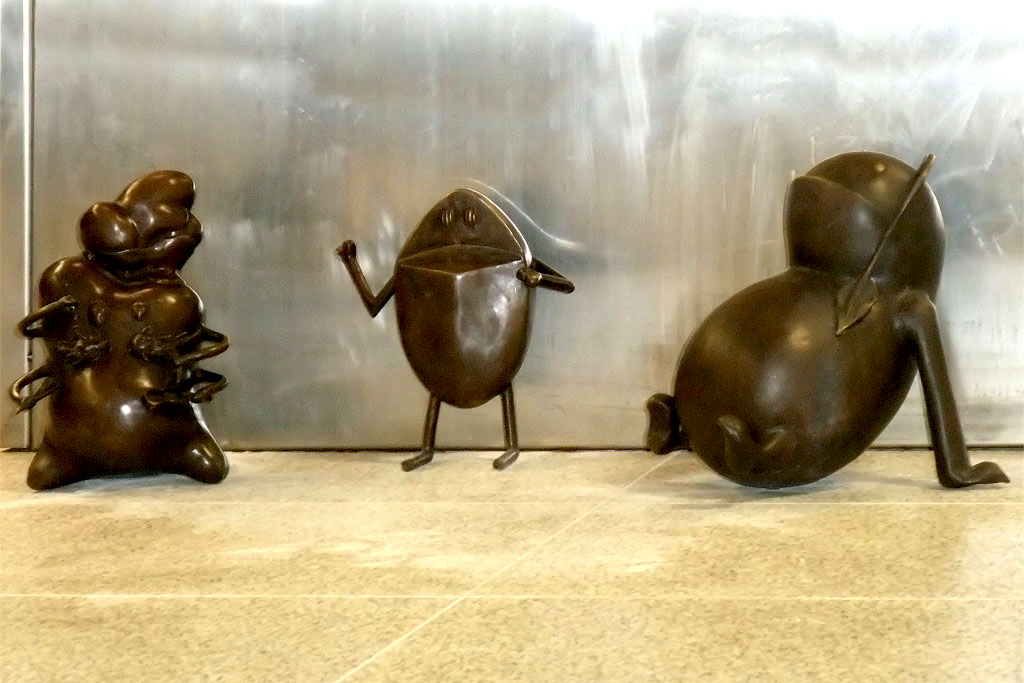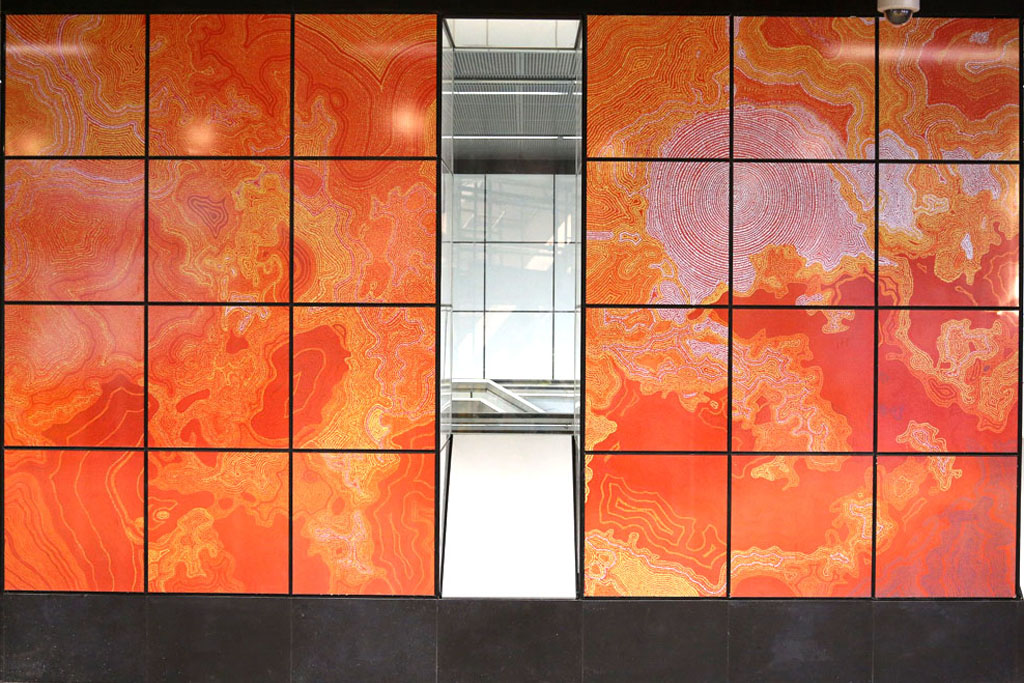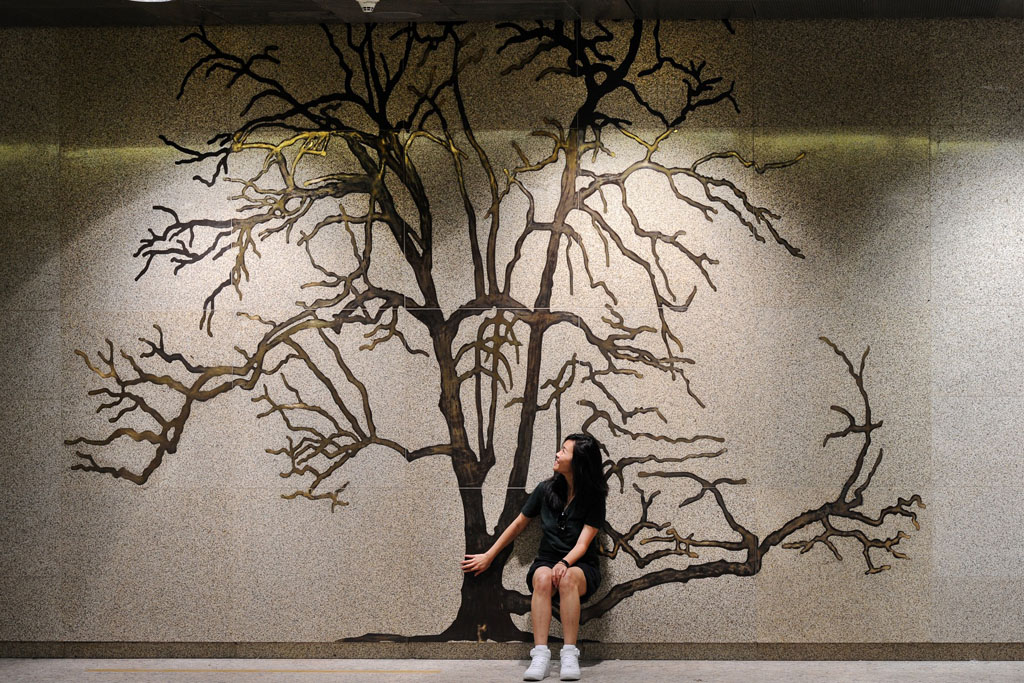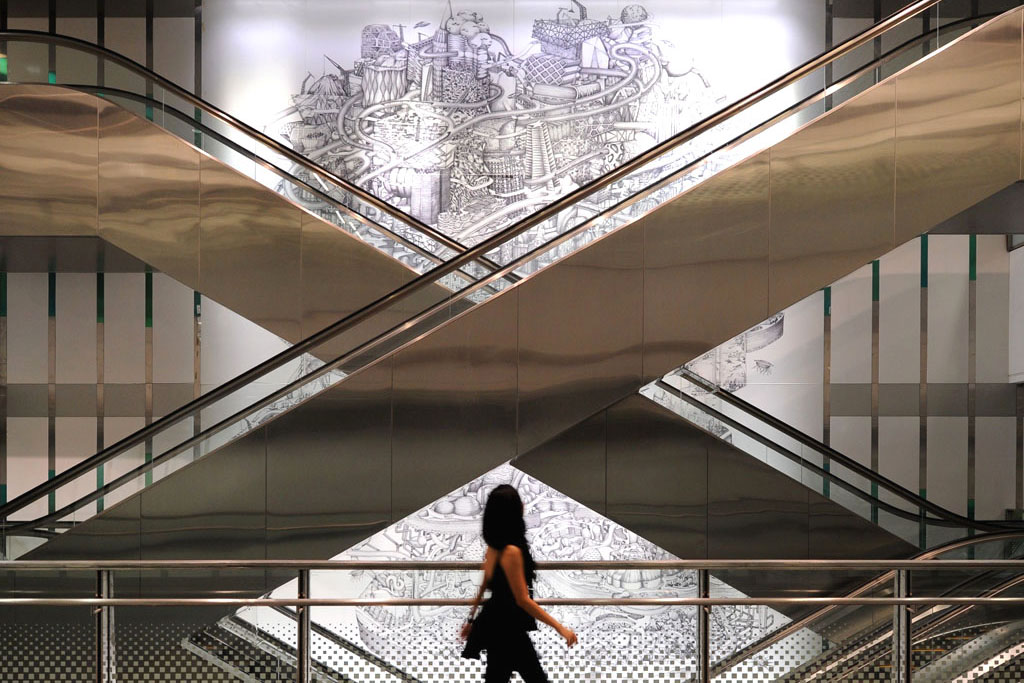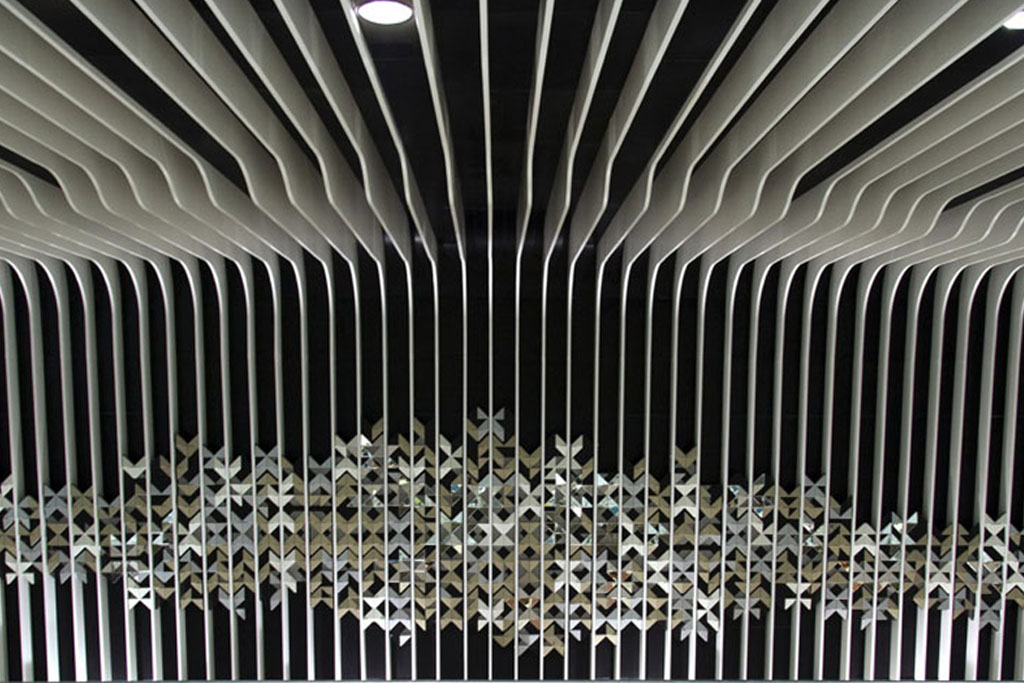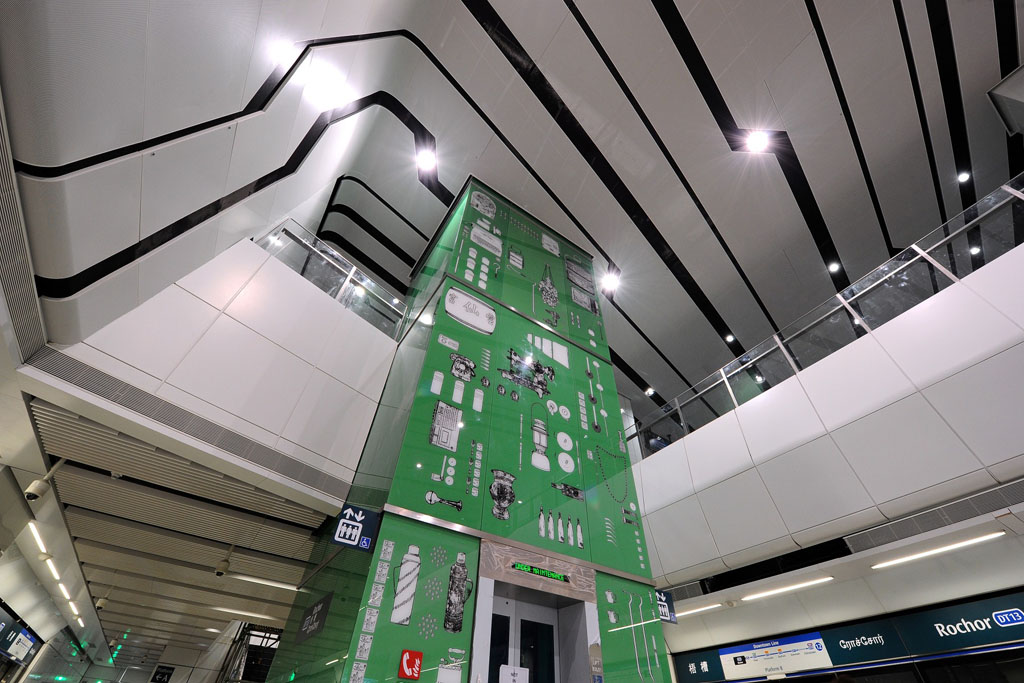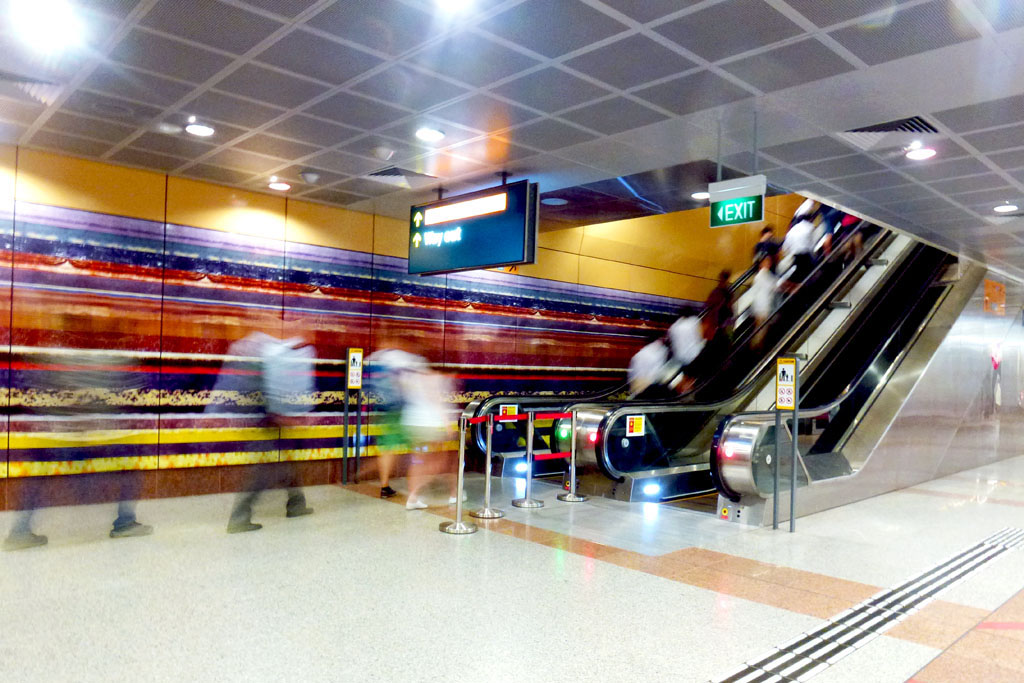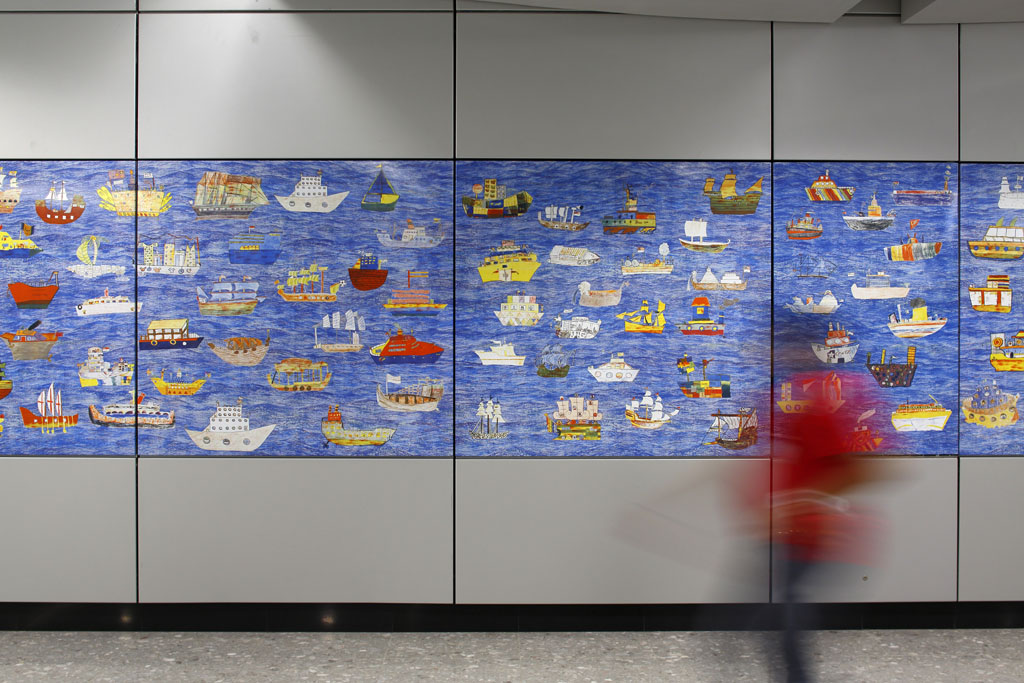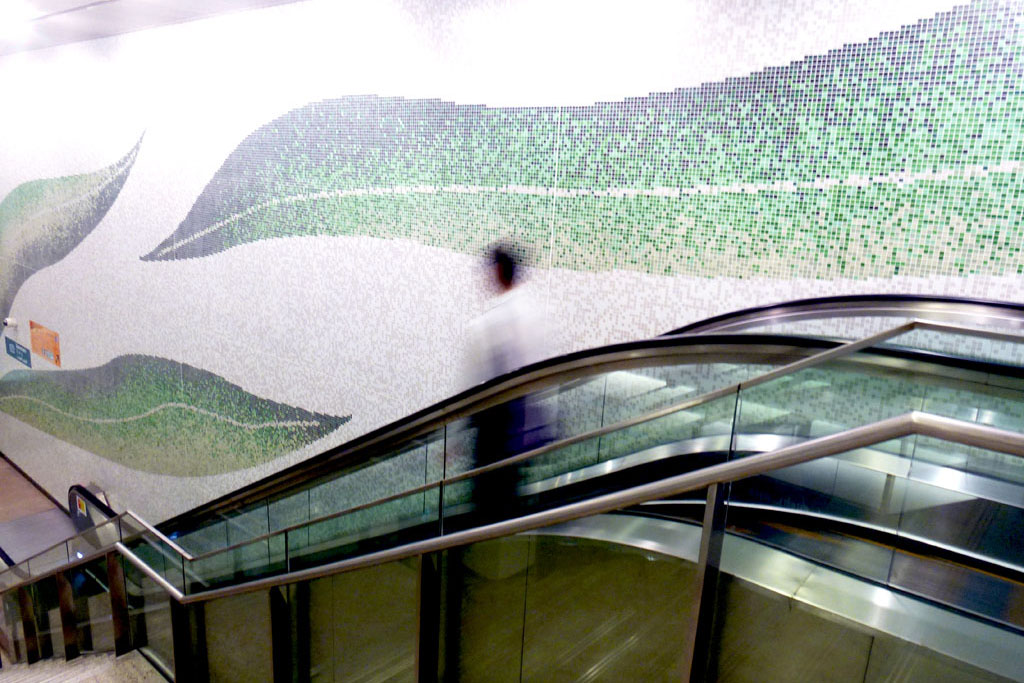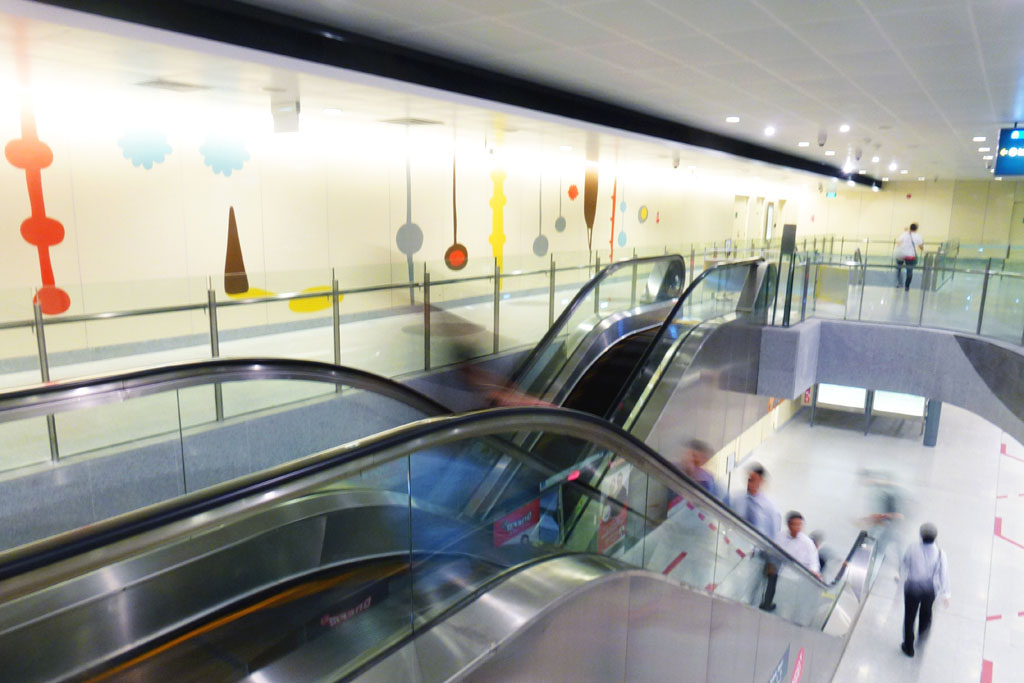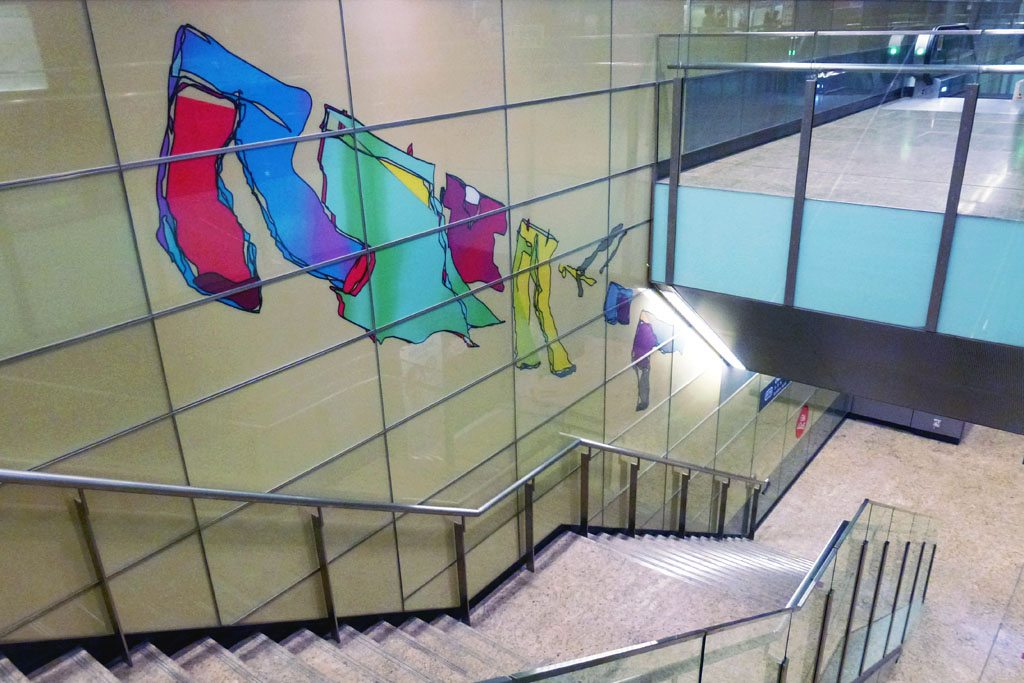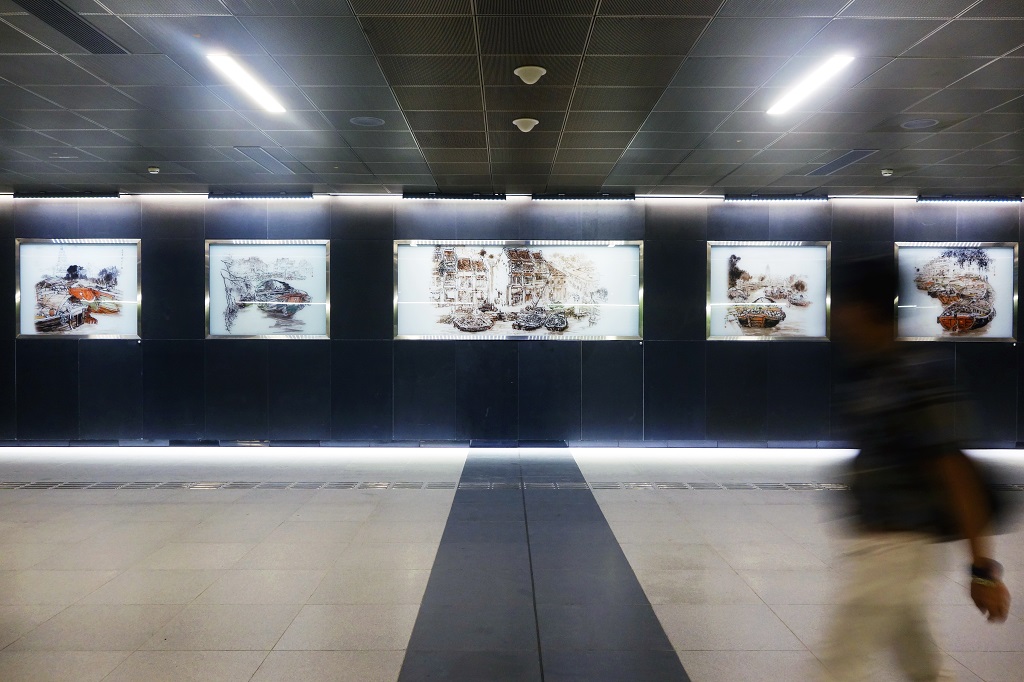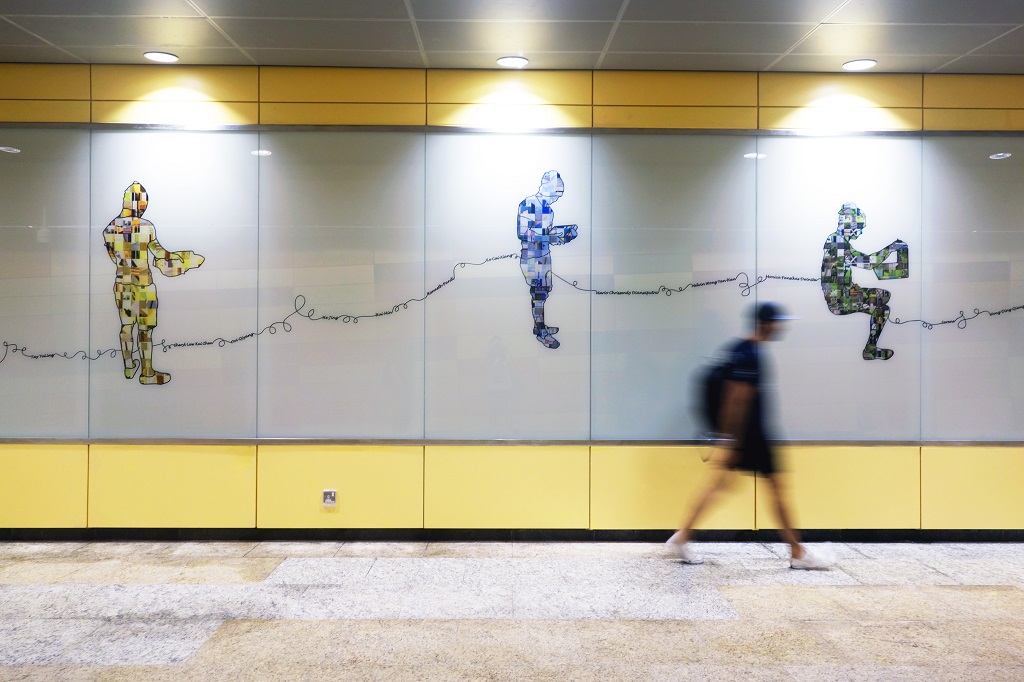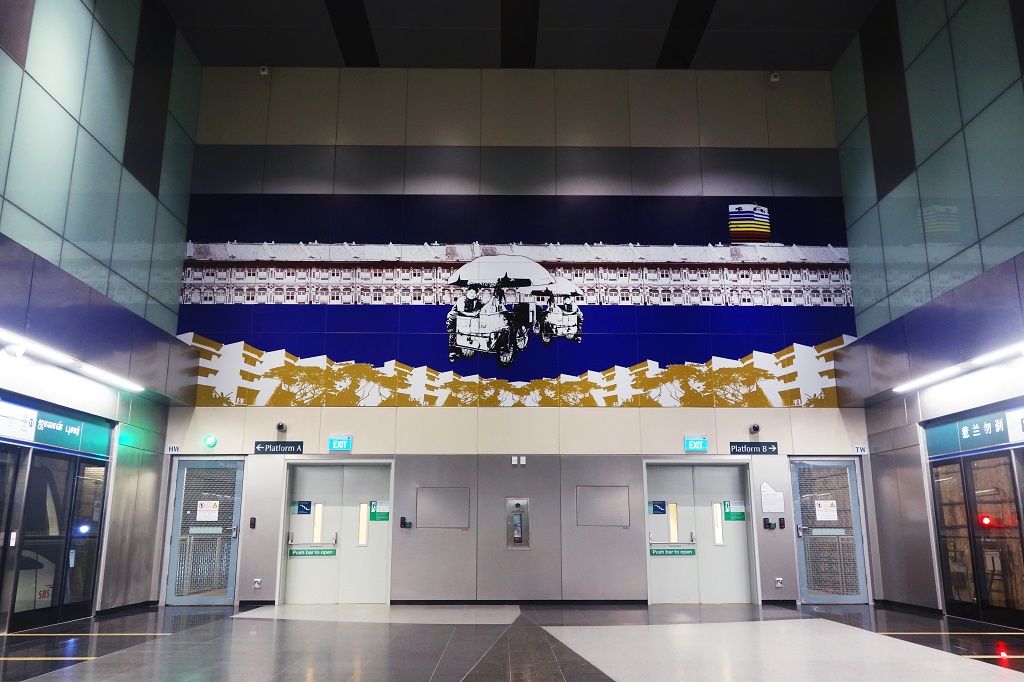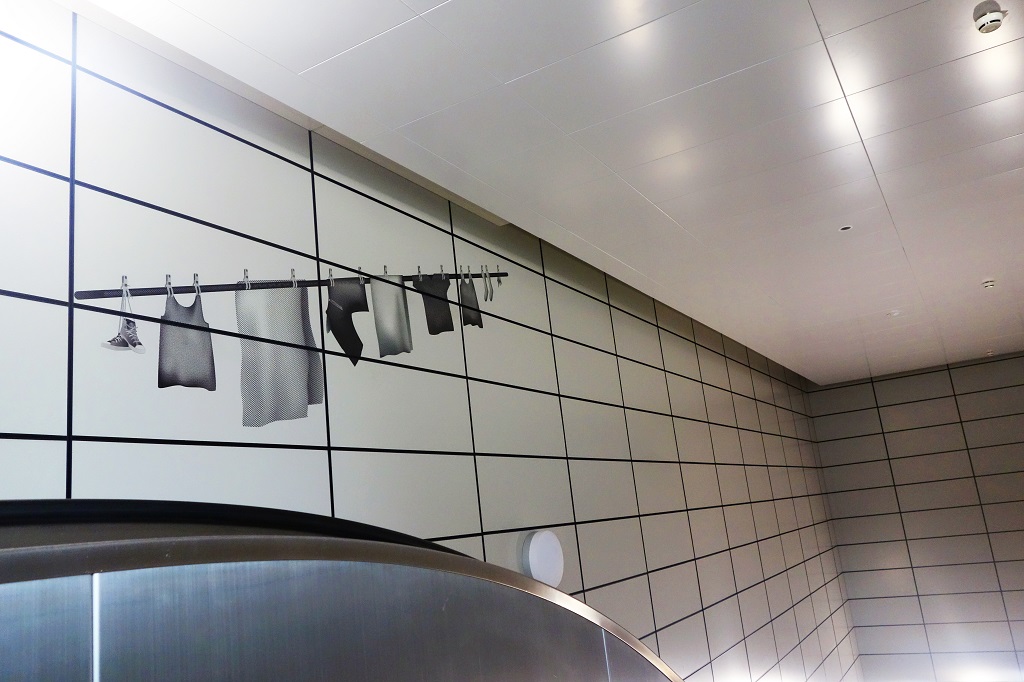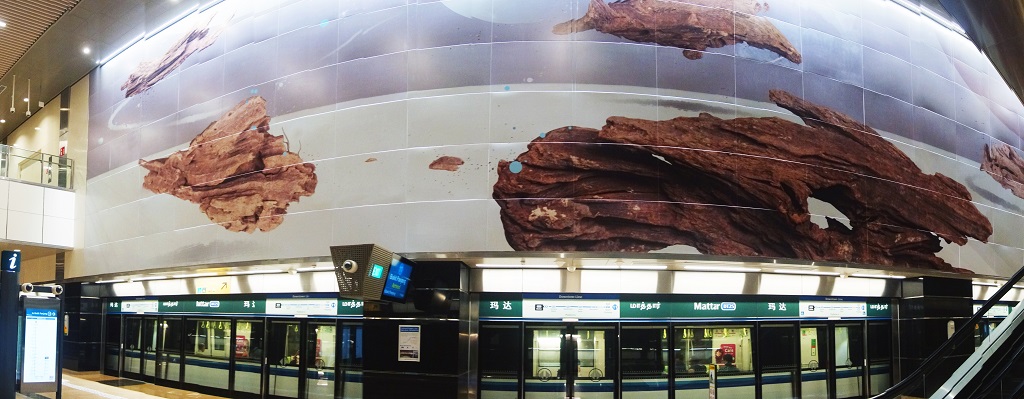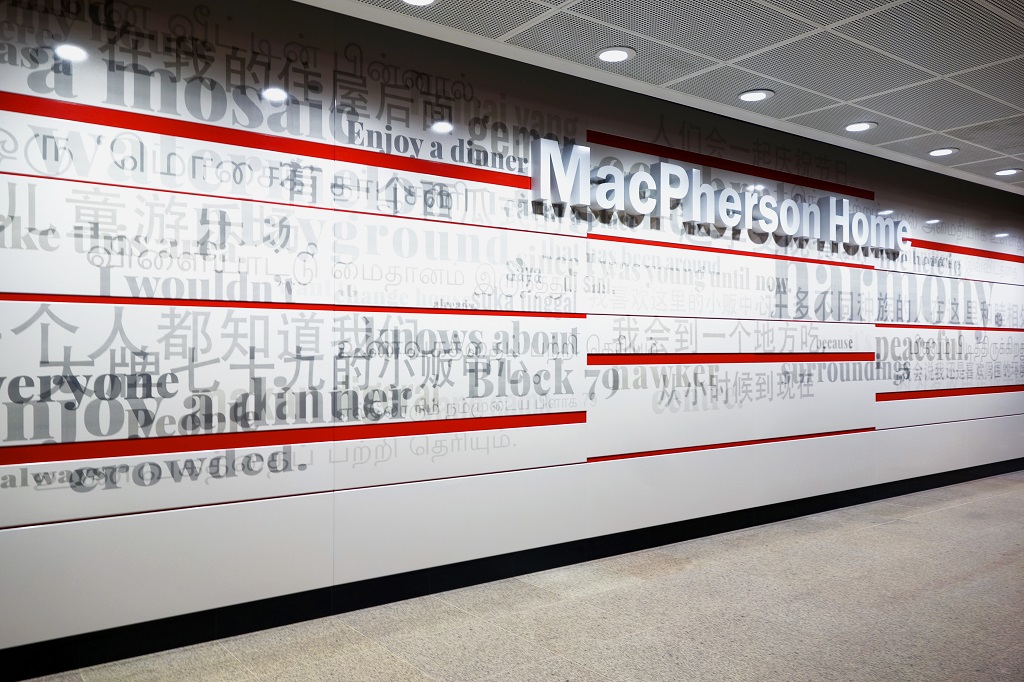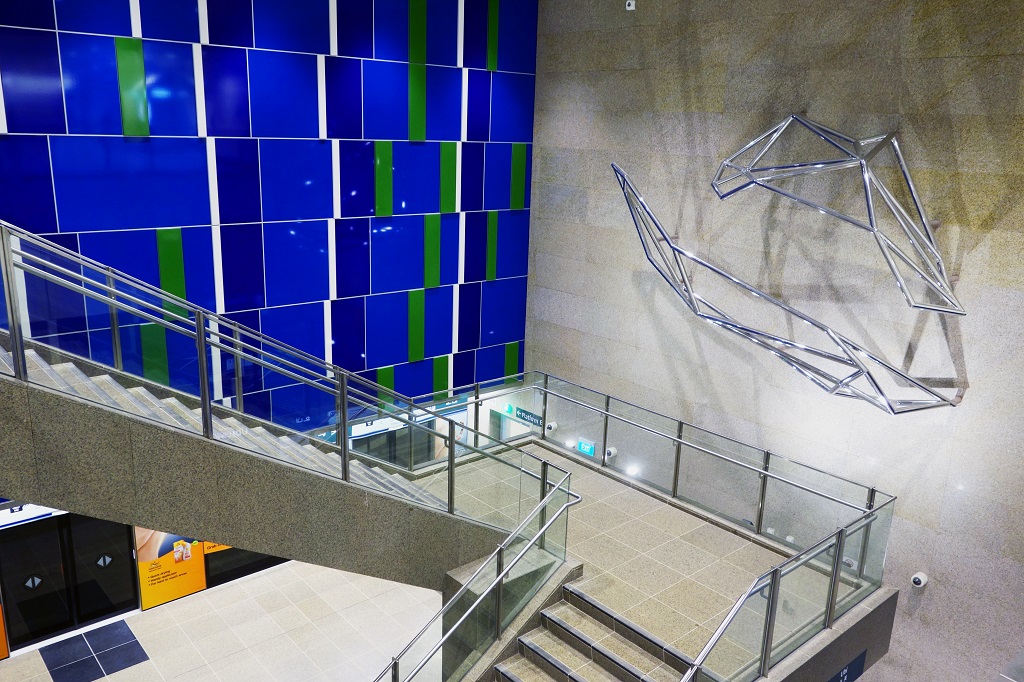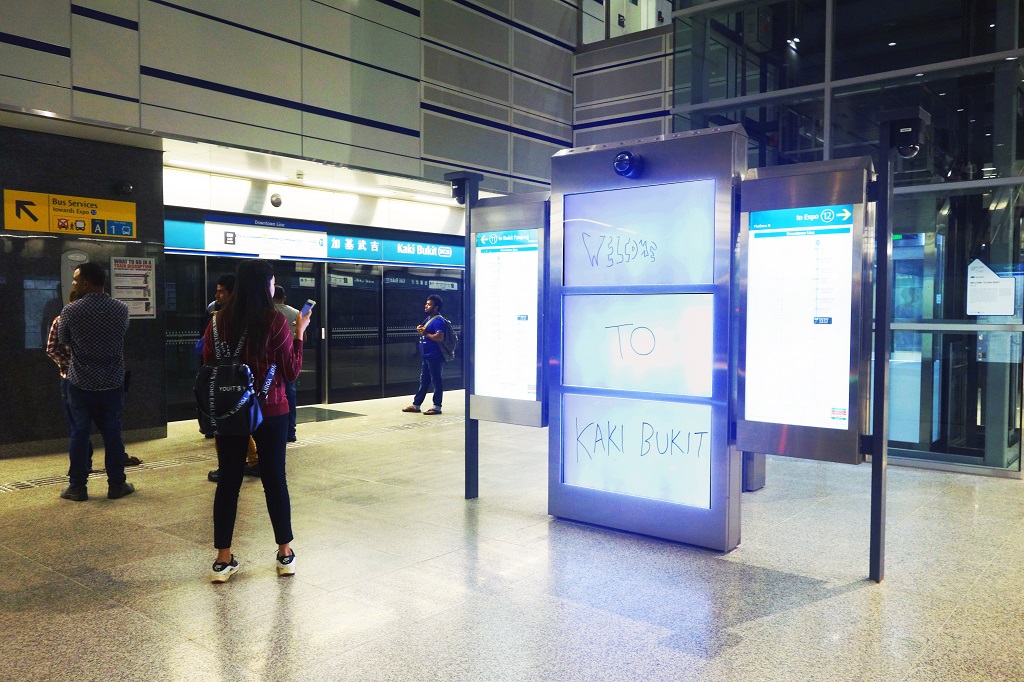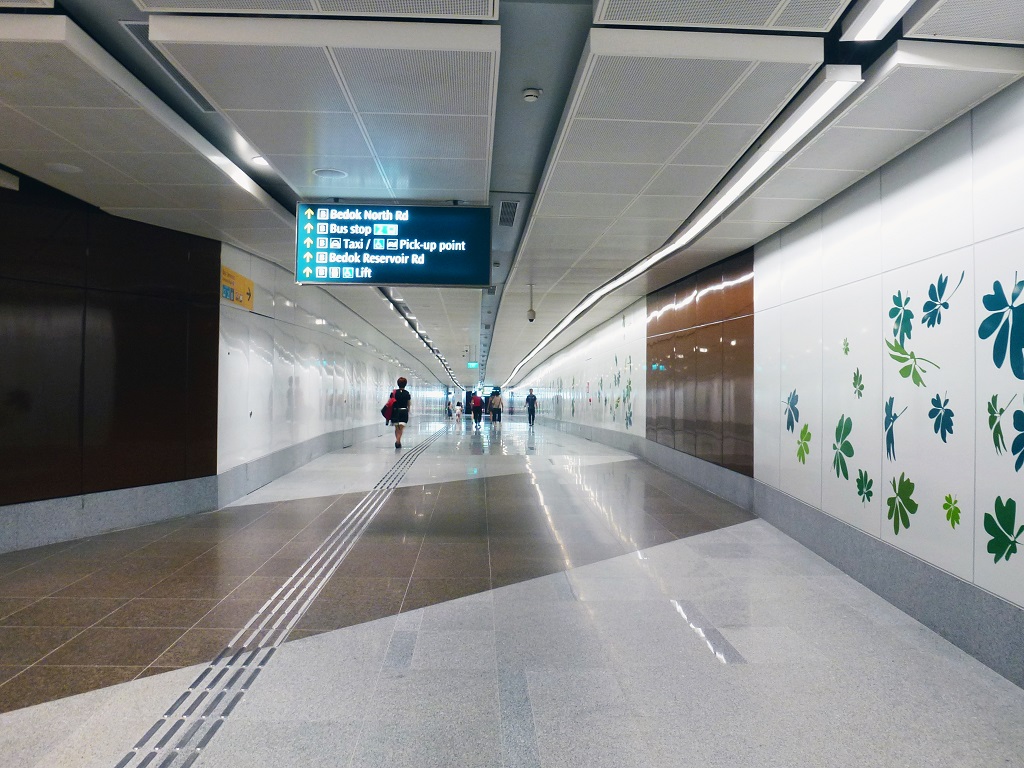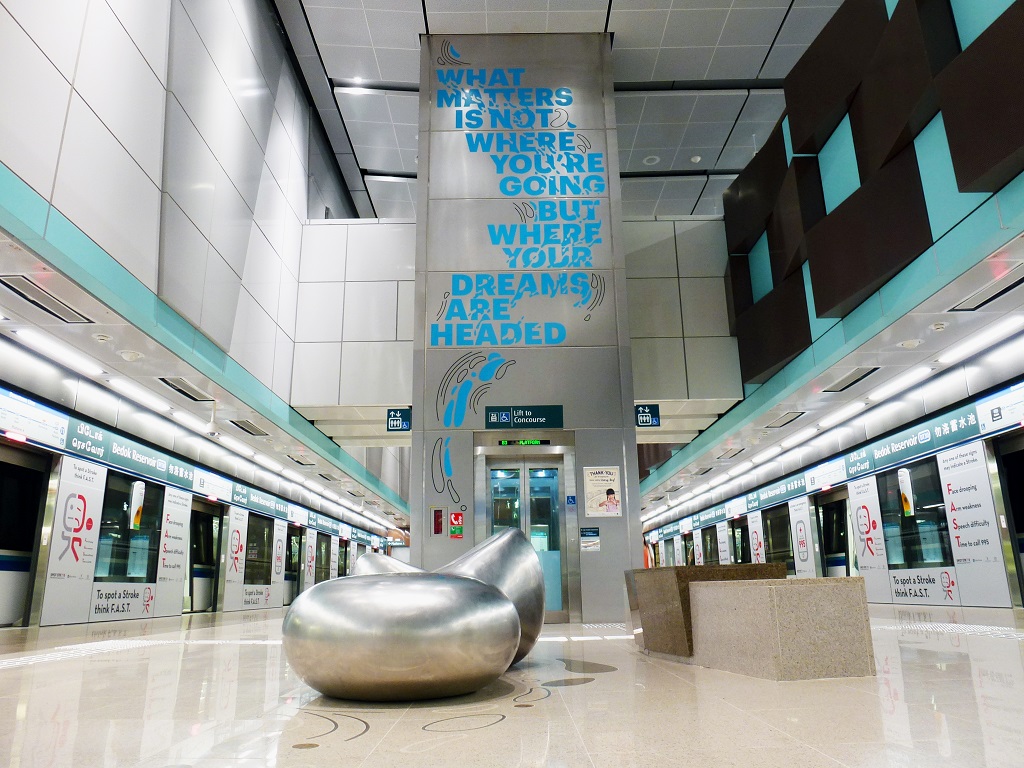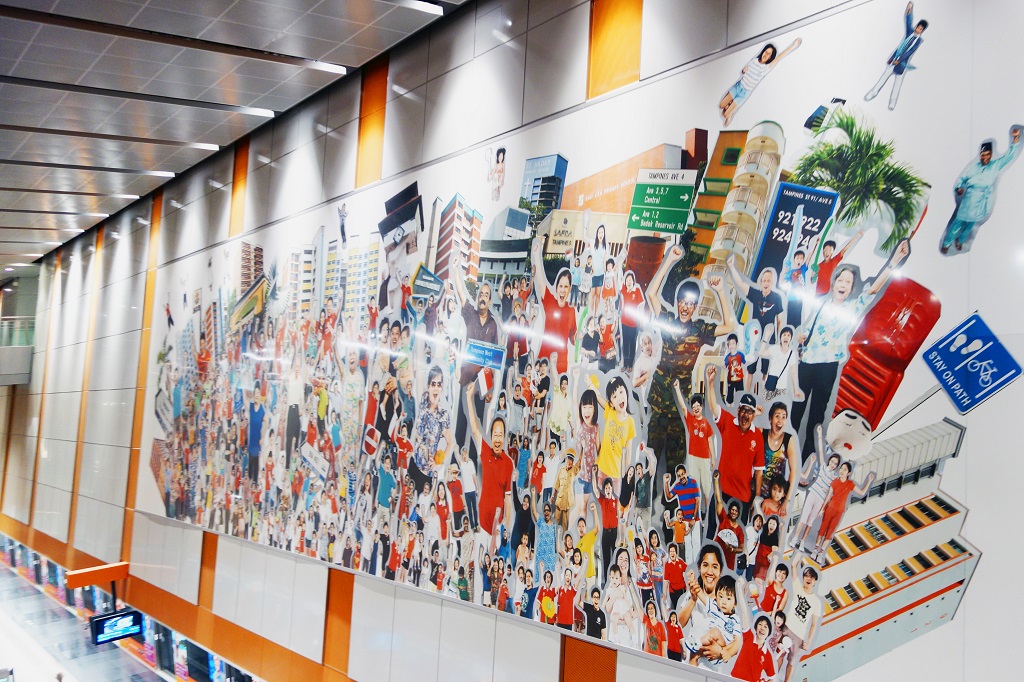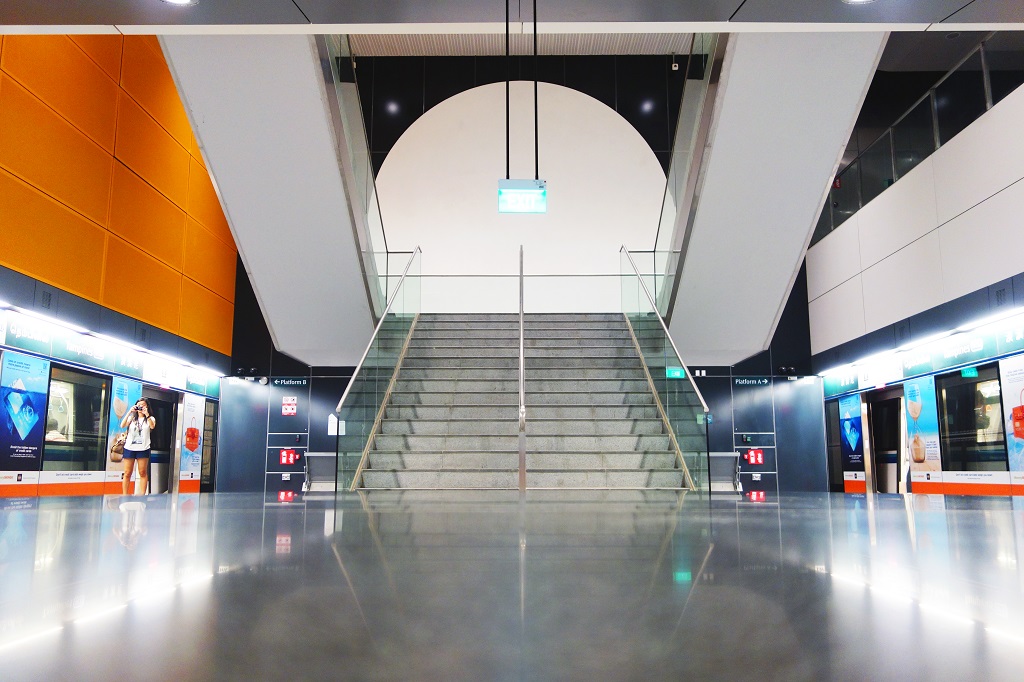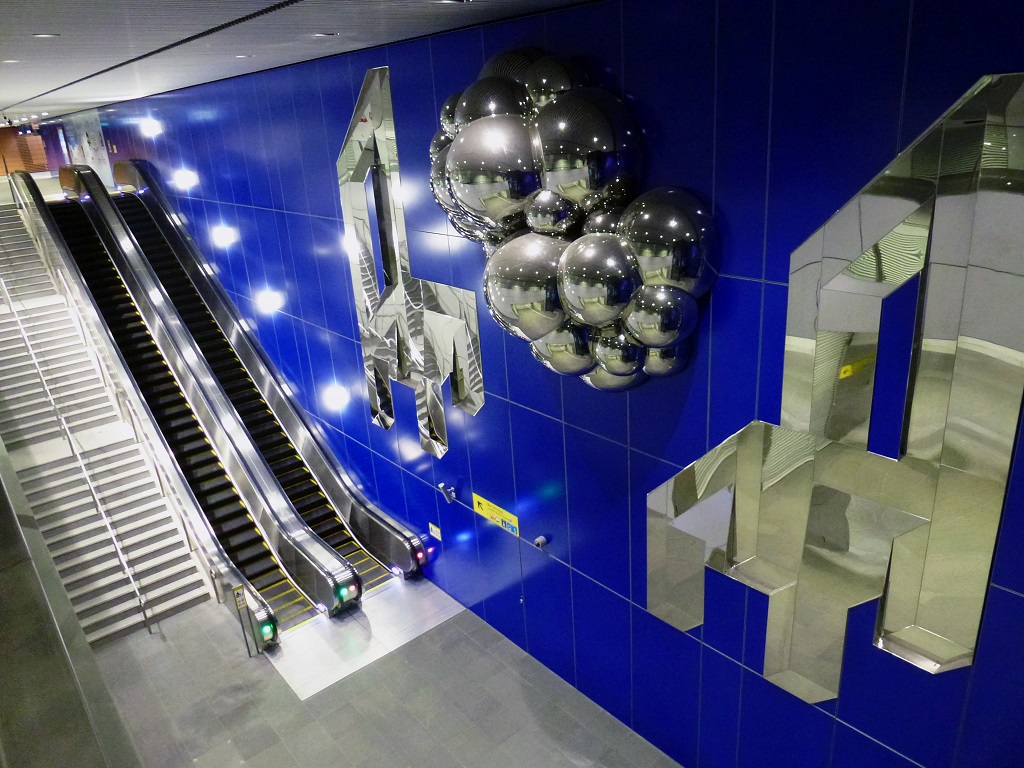-
Change in Boarding Berths for Services 27 and 53
26 Dec 2025 Read More
-
Bus Services Affected By The Great Christmas Eve Street Party 2025
23 Dec 2025 Read More
-
Changes in Operational Hours For Train And Selected Bus Services On New Year’s Eve
22 Dec 2025 Read More
-
Service 148 To Call At New Bus Stop Along Sang Nila Utama Road
19 Dec 2025 Read More
-
Temporary Relocation of Five Bus Services to Facilitate Upgrading of Sengkang Bus Interchange
19 Dec 2025 Read More
-
Services 58, 73, 159 to Call at a Pair of New Bus Stops along Lorong Chuan
17 Dec 2025 Read More
-
Changes in Operational Hours For Train And Selected Bus Services On Christmas Eve
15 Dec 2025 Read More
-
Route Extension for Service 299
08 Dec 2025 Read More
-
Bus Services Affected by Lane/Road Closures for Standard Chartered Singapore Marathon 2025
04 Dec 2025 Read More
-
Bus Services to Skip Bus Stop opposite The Ritz-Carlton Millenia Singapore
02 Dec 2025 Read More
-
Route Extension for Service 114
01 Dec 2025 Read More
-
Service 400 to Skip Bus Stop in front of Marina Bay Cruise Centre
25 Nov 2025 Read More
-
Route Extension for Service 146
24 Nov 2025 Read More
-
Introduction Of New City Direct Services 679, 680, 681 and 682
24 Nov 2025 Read More
-
Bus Service 4 Affected by Pace YRPR
21 Nov 2025 Read More
-
SBS Transit Unites Global Rail Operators in Singapore to Strengthen Rail Performance
19 Nov 2025 Read More
-
Route Extension for Service 163B
14 Nov 2025 Read More
-
Bus Services Affected By Great Eastern Women's Run 2025
04 Nov 2025 Read More
-
Road Closure Along Jurong West Avenue 4 Extended to 31 December 2026: Service 99 Affected
28 Oct 2025 Read More
-
Bus Services Affected by Tour de France EFGH Singapore Criterium 2025
27 Oct 2025 Read More
Art in Transit
Artworks have been integrated into the North East and Downtown Line Stations, adding a touch of beauty to daily commute. Some of Singapore’s top artists as well as education institutions have been featured on the stations. Select the Line and Station to find out more:
NE1 HarbourFront
Enigmatic Appearances by Ian Woo
Abstract images on blue vitreous enamel panels evoke a sense of open seas and ocean-bound vessels. This maritime theme is depicted through clean, uncluttered line drawings of nature, water and symbols of the marine industry rendered in the artist's fluid, minimalist style. A pair of footprints located at platform level adds a gentle touch of humour to the southernmost station of the North East Line.
NE3 Outram Park
Memories by Wang Lu Sheng
The pageantry of Chinese opera and the symbols of law and medicine come together in this vibrant artwork that exults in Outram Park's unique heritage. Bold, graphic and deliberately large, the works respond to the size and scale of the interchange station. Mounted on vitreous enamel panels, they serve as colourful visual signposts for the station's different entrances.
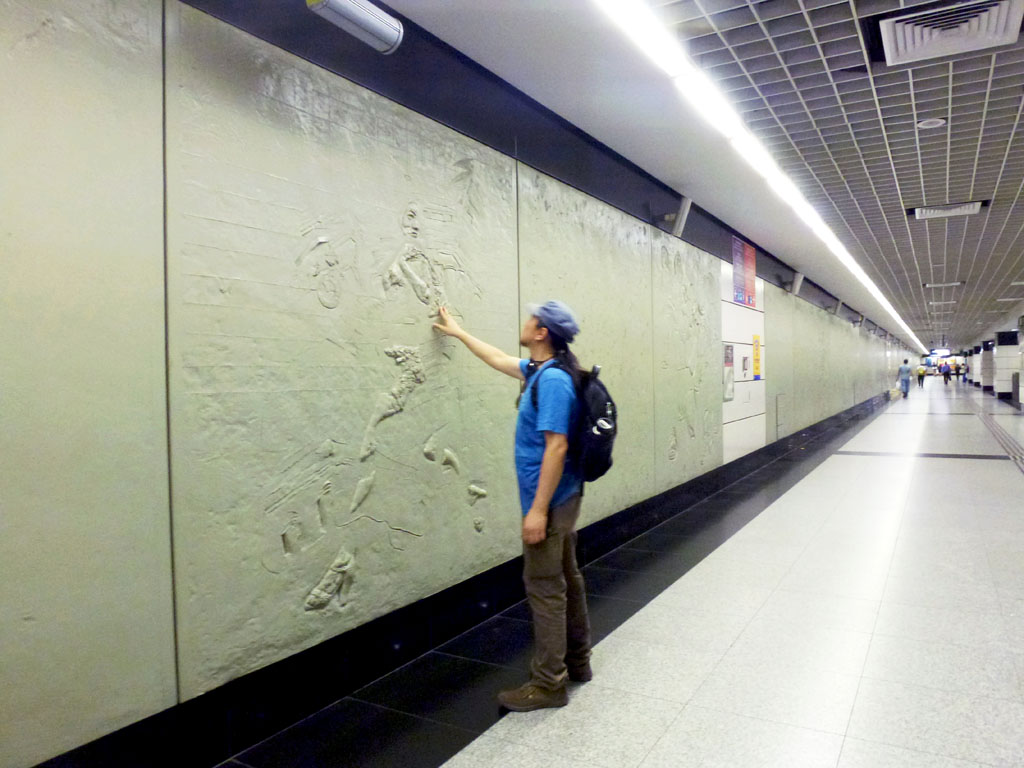
NE3 Outram Park
The Commuters by Teo Eng Seng
One of the most thought provoking artworks on the North East Line, these rich and varied wall reliefs of people in motion reflect the thoughts and inner-most feelings of commuters. These images seem to emerge from the wall and disappear into it, inviting commuters to pause and contemplate their meaning. The work was originally fashioned in clay by the artist before being transferred onto concrete wall panels.
NE4 Chinatown
The Phoenix's-Eye Domain by Tan Swie Hian
This outstanding collection of artworks comprises a resplendent wall mural depicting the arrival of Singapore's early Chinese immigrants and three sets of rhyming couplets in semi-cursive Chinese calligraphy. The richly coloured mural, featuring the mythical phoenix is located at concourse level while the poems are rendered as floor calligraphy at concourse and platform level.
NE5 Clarke Quay
The Reflections by Chua Ek Kay
A multi-faceted portrait of Singapore River today and in years past is presented through artworks in different mediums. On the station walls, four Chinese brush paintings depict Singapore River as the city's lifeline throughout its history while an abstract brass panel in rich, warm colours portrays the river in all its moods. Floor tiles of the painted eyes found on tongkangs or Chinese junks help guide commuters through the station.
NE6 Dhoby Ghaut
Universal Language by Sun Yu-Li
This artwork is a good example of how art can help guide commuters through a complex interchange station. Floor tiles that employ a universal language of symbols such as the hunter and the fish line the six routes leading towards the trains. At the heart of the station, these symbols come together in a large floor mural and stunning wall panel.
NE6 Dhoby Ghaut
Interchange by Milenko & Delia Prvacki
Located in the linkway of the interchange, the work of this husband and wife team salutes Asia's rich artistic legacy. Working in mosaic, Milenko created a lush, floor design that fans out at the foot of the escalators and four sets of column rings. A vibrant, tactile wall mural sees Delia's refined work ceramics fusing seamlessly with Milenko's earthy mosaics.
NE7 Little India
Memoirs of the Past by S Chandrasekaran
These evocative, sepia-toned works celebrate all that is unique about Indian culture in Singapore. The influence of traditional Indian folk art comes through in the distinctive metal grilles at the station entrances and the elaborate floor works in bronze and granite inside the station. Animal paintings allude to the buffalo stables that used to be in the area in the past.
NE8 Farrer Park
Rhythmic Exuberance by Poh Siew Wah
The supporting activity of Farrer Park's glorious past is captured through paintings that combine figurative drawings and abstract expression. Sports as varied as soccer and swimming and athletics, are depicted through expressive brush drawings in black ink alternated with paintings of abstract shapes and lines in pastel colours.
NE9 Boon Keng
Metamorphosisby Lim Poh Teck
In this sunny, tropical painting, icons of everyday life offer a glimpse of Boon Keng's fascinating past and vibrant present. The works are replete with details that tell of changes in Boon Keng over the years. In a lively example of interactive art, some of the more charming details from the paintings are reproduced on the station walls and subways where the young and old may find them.
NE10 Potong Pasir
Point of View by Matthew Ngui
Striking and contemporary, this work sees text messages recording the aspirations of ordinary people being embedded into familiar images of urban life like clock faces high-rice flats. Installed at carefully chosen spots in the station, the pictures and words come together to form images of surprising detail and depth.
NE11 Woodleigh
Slow Motion by April Ng Kiaw Ngor
These etched metal panels takes a slice of urban life in Singapore at the start of Millennium and translates it into prints of commuters etched on zinc plates on the station walls. Candid, casual and unpretentious, these black and white images of family, friends and colleagues will serve as visual commentary of our lives and times for future generations.
NE12 Serangoon
Memories of Childhood by Eng Joo Heng
This heart-warming work offers a joyful look back at childhood in the rural villages of Singapore's past. The artist, a printmaker, created these colourful images of children at play from woodcuts which he cut by hand. The final work, produced in silkscreen or vitreous enamel panels eloquently captures the innocence and wonder of childhood.
NE13 Kovan
The Trade-Off by Eng Tow
Progress and what it has meant for Kovan - this is the theme of this intriguing work that juxtaposes topographical maps from 1945 and the present day. These maps of Kovan, one largely agricultural and the other depicting expressways and new developments, are made from granite inlays set on the station floor. These maps are complemented by cartographic symbols on the station's floor.
NE14 Hougang
Hands Up for Hougang by Seck Yok Ying
Hougang station showcases community art at its best with work made from the hand prints of 3,000 people from babies to grandmothers, foreign workers to community leaders. Originally imprinted in wet clay, these hand prints were later transferred onto concrete wall pales and arranged in a seamless sequence by the artist. An informal yet artistic cluster of seats reinforces the friendly feel of the station at platform level.
NE15 Buangkok
Water, Nature and the Contemporary by Vincent Leow
Exuberant and experimental, this contemporary works speaks for the vitality of Buangkok New Town. Selected images and archival photos of life in Singapore are embellished with dots, graphic motifs and bands, all in bold primary colours. Hard to miss when going up or down the escalators, the works add vitality and splashes of colour to the station.
NE16 Sengkang
T.R.A.N.S.I.T.I.O.N.S. by Koh Bee Liang
The changes in Sengkang, once a simple rural community are reflected in the warm glow of art on stained glass windows. The work comprises two contrasting glass murals, The mural of Old Sengkang shows warm nostalgic images of the past while the mural of New Sengkang, in black and white, depicts the skyscrapers that are now part of the area's landscape.
NE17 Punggol
Water, Landscape and Future by Goh Beng Kwan
This stunning work in glass catches the natural light in the station, evoking a sense of sea, sky and languid days spent on Punggol beach in year's past. The deep, intense colours and fine, tactile textures of the work were achieved through an exacting firing process that fused thin layers of glass hand painted by the artist. Fragments of materials are embedded in the glass, creating a shimmering effect that changes with the viewing angle.
NE18 Punggol Coast
TRAJECTORIES by Zul Othman
Trajectories captures the transformation of Punggol through the artist’s personal connection to its landscape. The artwork maps the area’s evolution from its natural forests and rivers to a modern residential enclave and digital hub, reflecting its rich history and envisioned future within the Punggol Digital District.
DT1 Bukit Panjang
Punctum of the Long Hills by John Clang
Bukit Panjang means long hills in Malay. The impressive row of tall HDB flats subtly suggests the long hilly landscape. The giant kampong boys peeking beyond the HDB flats represent their curiosity. As a country, we have made great progress. As citizens, we should be adventurous, taking risks in exploring our identities and seeking out for better opportunities.
DT2 Cashew
Project Eden by Donna Ong
In 1968, the vision of Singapore as “Garden City” was conceived by then Prime Minister, Mr Lee Kuan Yew – the key epithets being “green and clean”. Today, corridors and balconies flourish with bonsai, terrariums and various potted plants. This work pays homage to the island’s creative high-rise gardeners. Using a collage of everyday items found within Singaporean homes; like toilet brushes and other domestic items, the artist metamorphoses them into the “flowers” and “grasses” of picturesque gardens.
DT3 Hillview
What Remains by Darren Soh
In June 2011, the Malaysian KTM trains stopped running to Tanjong Pagar Station and the railway land was returned to Singapore. Railway tracks and other embellishments were swiftly removed upon the land's return. In a matter of months, all that was left of the KTM railway's century-old presence in the Bukit Timah area were the conserved Bukit Timah Station and three railway bridges. ‘What Remains’ is a body of photographic work that documents the remnants of the KTM railway line in the form of the steel bridge nearest to Hillview Station as well as the stretches of railway tracks left at the sites of all three bridges.
DT4 Hume
Continuity by André Wee
"Continuity" depicts a stylised cross-sectional view of the Former Ford Factory, revealing its internal structure and history. Located near DT4 Hume, it bore witness to significant events during World War II and the national monument now houses a permanent exhibition on the war and its legacies. It also plays a modern role in hosting visits from the public and ceremonies for the Singapore Armed Forces.
This two-part artwork invites visitors to reflect on the site's poignant past and significance in preserving our nation's history.
DT5 Beauty World
Asemic Lines by Boedi Widjaja
Referencing the earliest forms of writing, the artwork comprises ‘words’ and letterforms including Chinese, Jawi, Tamil and Latin layered one upon another rhythmically. At intersections the writings are accentuated in ascending and descending order like music scores.
The artwork presents the mix of languages as the result of our diversity, and invites the viewers’ aesthetic intuition to ‘hover’ between reading and looking.
DT6 King Albert Park
The Natural History of Singapore’s Mythical Botanic Creatures by Chan Mei Hsien, Long Ying Han, Soh Pei Ling
(Artists Caravan)
‘The Natural History of Singapore’s Mythical Botanic Creatures’ is a whimsical narrative illustrating the juxtaposition between natural and built habitats in our environment. The mythical biological collection os strategically positioned in nooks and corners of the station.
In collaboration with students from Methodist Girls’ Secondary School and botany experts, Ms. Tan Beng Chiak and Ms. Kok Oi Yee, the secret lives of mythical creatures from Bukit Timah Nature Reserve, in King Albert Park station are revealed
DT8 Tan Kah Kee
Gratitude (饮水思源) by Hwa Chong Institution
Inspired by the traditional Chinese idiom, 饮水思源, and Tan Kah Kee’s remarkable philanthropic legacy, the students and staff of Hwa Chong Institution embarked on a community art project to reflect on what it means to give back to society today.
Gratitude is composed of streams of colourful text diligently handwritten by students of the school. Up close, the artwork reveals a myriad of rousing tributes to those who have walked before us, as well as heart-warming reflections of those currently walking by our side. When viewed from a distance, words dissolve into trickles of blue and green, forming the river that connects us to our rich history and cultural heritage.
DT9 Botanic Gardens
What is a Tree by Shirley Soh
Located in different parts of the station, the Tembusu is one of Singapore’s best-loved trees.
Musings on trees have also been captured from local poets, artists, nature lovers and visitors to the Botanic Gardens: Dr Geh Min, Danielle Henricus, Keith Hillier, Kuo Pao Kun, Madeleine Lee, Rahmah Mirza, Salima Nadira, Ong Kim Seng, Tan Chu Chze, Tham Pui San, Robert Treborlang and Arthur Yap.
DT10 Stevens
PIN - 23040 by Om Mee Ai
PIN – 23040 illustrates existing patterns in nature that constitute a historical dimension of the junction of Stevens and Bukit Timah. In the 19th century the area was the natural habitat for biodiversity with an expanse of various exotic crops. The manually stamped artwork uses nutmeg and rubber tree foliage, seeds and fruits to remind commuters of the distinct historical and natural identity of the surrounding area.
DT11 Newton
Newton by MessyMsxi
Singapore is constantly reinventing itself to adapt to changes and challenges. While redeveloping and altering our urban landscape, the search for more space grows.
The artwork draws inspiration from our city and Newton heritage, featuring the imagined landscape of Singapore in 2200. Most importantly, it envisions an alternate reality of how it may look as we progress, evolve and develop to new heights and deep under, using our ingenuity, mindfulness and creativity.
DT12 Little India
Woven Field by Grace Tan
The soft curves of the architectural features in Little India Station set the backdrop for Woven Field - a landscape of tessellated triangular patterns inspired by the woven patterns commonly seen in the traditional sari. The beauty of the sari cloth lies in its intricate and repetitive geometric patterns. Weaving interlaces the architecture and artwork to form a single entity.
DT13 Rochor
Tracing Memories by LASALLE College of the Arts
Local vintage objects, acquired from The Thieves’ Market, are featured deliberately in Tracing Memories to convey the impression of a motherboard. Executed in three styles of image making, the artwork attempts to examine the binary lives of Singapore’s youths: a fascination with technological advancement through the latest gadgets and gear, as well as sentimentality for history, tradition and memorabilia.
DT14 Bugis
Ephemeral by Patrick Chia
Working within the opportunities and constraints afforded by the space, Ephemeral invites commuters to experience the work over time during their daily journeys. The artwork aims to engage each commuter at his or her own moment. Some notice and understand immediately, others experience it differently at each encounter and some may take it in only at a subconscious level.
DT15 Promenade
Earthcake by Ana Prvacki
Earthcake examines the geology and tradition of Singapore by zooming into the layers of cultural sediment permeating the site. Conceived as a collage of earth and local kueh—focusing on the kueh—the artwork looks at the quintessential component of Singapore's multi-ethnic fabric—food—a powerful and unifying element essential to its identity and core.
DT16 Bayfront
When The Ship Comes In by Lee Wen
When The Ship Comes In commemorates Singapore’s history as an important port of call for ships from different countries and cultures. Based on actual historical ship models as well as pure fantasy and imagination, the mural is a collage of images of ships drawn by young Singaporeans, age 7 to 12. Through these ships we not only recall our history but also project the children’s hopes for the future serving as a concrete archive of collective social memory.
DT17 Downtown
Leaves by Jason Lim
The artwork draws inspiration from the biological structure of bamboo leaves. Looking through the microscope, the dense cell networks of leaves symbolises the intricate networks of businesses around the station. The blending hues of green illustrate the vibrancy of the area above.
DT18 Telok Ayer
Charm of Bay by Lim Shing Yee
Historically, Telok Ayer, which means ‘bay water’ in Malay, is a coastal street and the main landing site and focal point of settlement for Chinese immigrants. The artwork celebrates the history of the area by using abstract forms inspired by plantations and elements of water. The three large bulbous structures symbolise primitive monuments, while their shadows mapping the ever-changing passage over time. Perceived as whole, the artwork transforms the concourse into a whimsical landscape.
DT19 Chinatown
Flying Colours by Cheo Chai-Hiang
Flying Colours attempts to transform the mundane hanging of clothes to dry on poles outside HDB flat windows into a festive celebration. Created in a lens shaped format, commuters will experience the subtle changes of colours, giving the illusion that the clothes are flying in the wind. The artwork spans across the concourse and leads commuters to the platforms.
DT20 Fort Canning
Through His Eyes by Lim Tze Peng
The artist makes reference to the history of Fort Canning in his artwork, imagining Sir Stamford Raffles seeing a bustling port below from his house on the hill.
DT21 Bencoolen
Tracing Memories by Nanyang Academy of Fine Arts
The students of the Nanyang Academy of Fine Arts (NAFA) students created this artwork with images of the community around the station. Each figure is composed of a collage of photographs of buildings, people and objects.
The team of NAFA students collected more than 800 photographs, and the artwork acts as subtle wayfinding to Singapore Management University (figures with laptops) and to NAFA (figures with drawing tools).
DT22 Jalan Besar
A Kaleidoscopic World by Lydia Wong
The Downtown Line Competition winning artwork, the artist photographed a collection of items along Sungei Road to capture the slightly chaotic and vibrant feel of the community living and thriving in the area.
The work is called ‘Kaleidoscopic World’ because images are angled and juxtaposed to create a sense of personal journey and experience.
DT23 Bendemeer
And A New World by Cristene Chang
Impressions, memories and feelings of the area helped the artist create an artwork in celebration of the patterns found in the local fabrics and architectural motifs on the buildings found in the Bendemeer area.
DT24 Geylang Bahru
Constructed Memories by Marienne Yang
The artist recreates scenes from a community going about its daily business of painting a wall, buying kopi-o, construction workers drilling – capturing the essential flavor of Singapore.
The use of pictogram figures adds a sense of whimsical fun and a touch of curiosity as commuters discover a kitten, a safety boot, a plastic bag of kopi-o around the station.
DT25 Mattar
Agar Panel by Genevieve Chua
The religious landscape around Mattar Road is deeply ingrained in the history of the area, and the artist transformed a cluster of agarwood shavings, a unique and rare type of wood used in incense and perfumes, into a nebula or cosmic landscape.
The light and scent (depicted in white and blue in the artwork) work subtly as a wayfinding device leading the commuters to and from the platform and concourse.
DT26 MacPherson
Trails of Thoughts by Aminah Mohd Sa’at
The artist worked with residents of MacPherson area to develop the artwork, and had interviewed 27 residents during a National Day event in 2013. These interviewees, comprise of different age groups from across all races from the MacPherson area, gave their thoughts and sentiments on their community. Eventually, these were recorded and reproduced along the concourse wall, in Singapore four official languages.
DT27 Ubi
Staple by Zainudin Samsuri
The Malay word ‘Ubi’ refers to the tapioca plant and the artist explored this idea when creating the artwork for Ubi Station. The skeletal stainless steel artwork represents an abstraction of the tapioca roots. He also provided a more literal representation of the tapioca plant, using stainless steel inlay, in the granite floor on the concourse and platform levels.
DT28 Kaki Bukit
Welcome to Kaki Bukit by Hans Tan
The artist engaged the diverse community of residents, workers and students around the station and had asked them to write “Welcome to Kaki Bukit” while being filmed. These handwritten messages create a dynamic art screen which will greet the commuters as they descend from the escalators.
DT29 Bedok North
Dedaun Masa (Leaves of Time) by Ahmad Abu Bakar
The artist aims to harmonise the station with its environment by bring in the elements that are close to the station – nature, community, history – into the station atmosphere. The type of leaves was chosen from the trees surrounding the station, and will continue to be present many years to come.
DT30 Bedok Reservoir
Somewhere Else by Ng Chee Yong
The artist was inspired by Bedok Reservoir to create an artwork based on water – creating connections between the flow of water and flow of human traffic through a station. It consists of a typographical installation on the lift shaft with connecting motifs on the platform leading towards the exit. A special bench formed out of a graphic element was developed such that the entire artwork serves both visual and physical enjoyment.
DT31 Tampines West
Welcome to Jingapore by Jing Quek
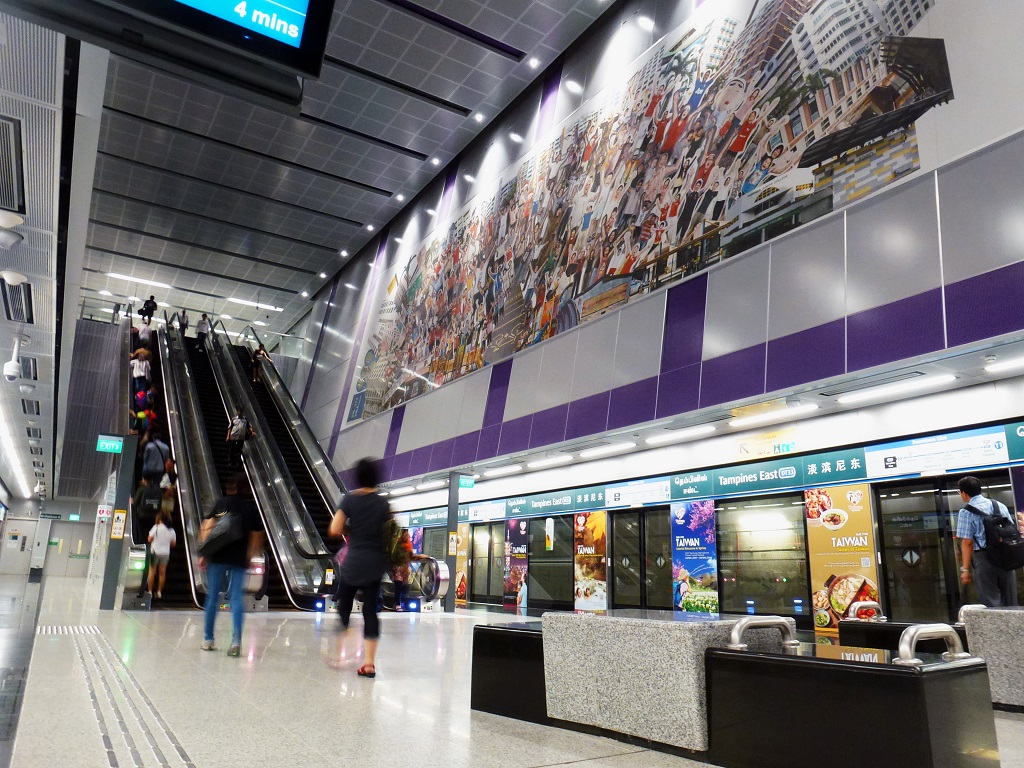
DT33 Tampines East
Welcome to Jingapore by Jing Quek
The artist engaged the community around the stations in a 5-day public event and captured photographs of 250 residents for each station in a specially-designed photo booth. He then combined the images of people, places and objects to create a collage of community.
DT32 Tampines
Tall Long and Big Round by Studio Juju
This hyperbolic artwork magnifies the experience of symmetry and reflection between the art walls and the benches. The artists explored the concept of pure geometrical forms to bring a sense of calm and order into a chaotic station environment.
The white ‘Big Round’ artwork, contrasts with the red ‘Tall Long’ artwork, aid as wayfinders for commuters moving to and from the platform.
DT34 Upper Changi
I am Anonymous by Boo Junfeng
The artist engaged the students at the Singapore University of Technology and Design (SUTD) to create the artwork. The students were asked to contribute their fingerprints and were told to write down an adjective that describes them. Using lenticular technology (an image that will only be visible at a specific angle), the adjectives embedded in the fingerprints will reveal themselves at different angles as the commuters walk pass them.
DT35 Expo
A Banquet by Yeo Chee Kiong
A Downtown Line Competition winning artwork, this piece comprises two chairs and a speech balloon in between, which signifies a conversation. The reflective material of the artwork will reflect its surrounding colours and movement, symbolising a cultural exchange. The artwork manifests the ‘Free-Trade Spirit’ through a free-floating ‘Cloud over the table of negotiation while the isometric chairs are arranged in a manner to signify the necessity of “game rules” in any business.

